Farm Life
Information and anecdotes about living on a farm
-
Your Dog & New Puppy: Top Tips
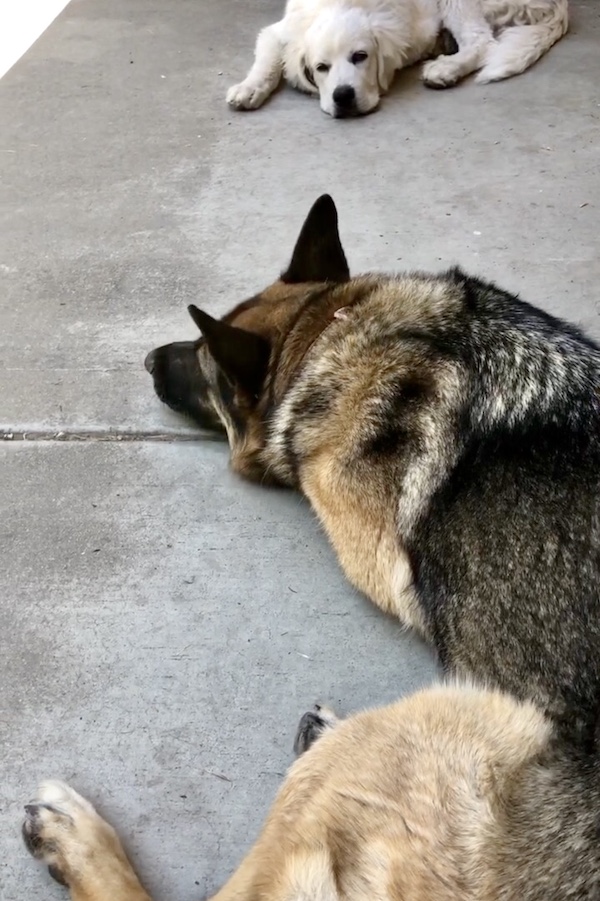
I was so worried when I adopted my Great Pyrenees rescue puppy. I didn’t know how my older German Shepherd would react. She has never enjoyed socializing with other dogs and is known to be quite the stinker. Whenever other dogs approach her, especially larger dogs, there is often growling and barking. She shows no indication she wants to be friends with them. I always make sure to keep her on leash if we are going to be around other canines, just to be on the safe side. My worries increased when I read online that German Shepherds and Great Pyrenees do not generally get along. But something told me that I had to try.

I made sure to get a male puppy, since I had learned that often same sex dogs can have issues (although I previously owned two female terriers and had no problems). When I brought Jake home, I initially let Sasha view him from behind a glass door, and of course the aggressive barking ensued. After a few days of this, I brought her out on a leash, and let her get within sniffing distance. She immediately became aggressive and tried to nip at the puppy. My instinct was to yell at her, but this did not help at all. Then I tried some different strategies, and they worked miracles. I am certainly not a professional dog trainer, but I wanted to share what worked for me. Here are my top tips for introducing your dog to a new puppy.
- Use Treats. Sasha’s number one preferred reward is food, so I used treats to help them bond. I would bring Sasha near the puppy on her leash and every time she did not growl at him or get aggressive I gave her a treat. So I was rewarding her for good behavior rather than punishing her for bad behavior. I also gave the puppy treats, and they both were more focused on getting a dog biscuit than anything else. I gradually amped this up to 2-3 times a day, and eventually, the aggressive behavior was extinguished. Keep in mind that these interactions should never be forced. I like petmd.com’s advice to “look for signs that one dog is trying to get away…if your dog runs over to you, don’t send them back ‘into the fire’ because this is usually an indication that your dog needs a break from the interaction”.
- Give your older dog plenty of Love and Attention so he or she does not feel jealous of the new puppy. I continued my routines with Sasha, included one on one throwing her toys for her to fetch. I also brushed her, and gave her lots of petting, praise and kisses.
- Exercise Your Dog and Puppy Together. Jake was not leash trained when I brought him home, but Sasha was used to going for daily walks with me. I purchased a puppy stroller at a thrift store, and used it to take Jake with us until he became leash trained. Initially she tried to nip at him, but he was safely velcroed in the puppy stroller. Eventually, after a few times, she accepted that this was part of our walking routine, and Jake loved watching her lead our team down the road. Now that he is leash trained they trot side by side together. It’s so cute to see Sasha tolerate his frequent displays of affection for her.
- Let Them See Each Other But Keep Them Separated When You Leave. I did not ever leave my dog and puppy alone together for several weeks, just to be on the safe side. I kept Sasha in my mud room, and let her see Jake through the glass doors. You could use a baby gate or crate to separate them too if your older dog is initially hostile. It helps them get used to each other but protects your vulnerable puppy from being hurt. The puppy wanted so badly to play with her, but it wasn’t safe. They were able to develop a bond by seeing each other safely. He now pushes the door open if Sasha is in the mud room to let her into the house!
- Always Let Your Older Dog Have Some Time Alone. If you have ever been the Mom of a toddler, you will know how exhausting it is just maintaining your sanity with all their antics, however cute they may be. You can imagine how it feels for an older dog when there is a puppy, constantly demanding attention from them, jumping on them when they are trying to relax, chewing on their ears, taking their toys, etc. I make sure to let Sasha have time alone, even now when they absolutely adore each other. It enables her to have time alone to do what she wants without Jake’s constant shenanigans. According to the American Kennel Club, you should give your older dog breaks from the puppy several times throughout the day, crating either dog if necessary.
- Make Sure to Get Toys & Bones for Both Dogs. Sasha is very protective of her toys and bones, so I made sure to get extras for the puppy. Jake learned quickly not to take one away from her due to her warning growl. Unfortunately, Sasha will still occasionally steal things from him. If I see her steal Jake’s toy or bone, I simply give him a different one and the issue is resolved.
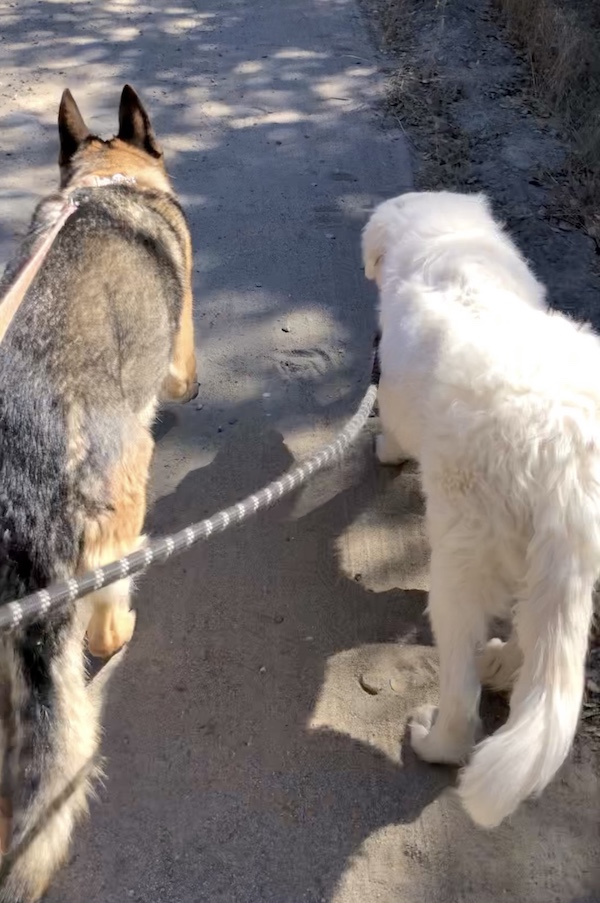
I hope you found these tips helpful. For more information on this topic, you may want to read these informative articles by AKC and Pet MD. You may also enjoy reading Puppy Love! Favorite Dog Quotes. Thank you for visiting my blog. Wishing you peace, love, and happiness!
-
Feed Chickens This for Super Healthy Eggs!
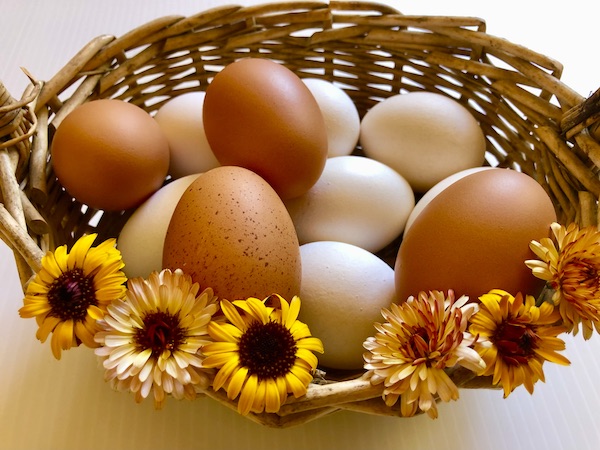
I was recently reading a story about a local couple here in California who are selling their designer eggs to upscale restaurants for $20.00 a dozen. Apparently they feed their chickens superfoods such as acerola cherry and camu camu powders (I had to look these up!) and give them coconut water to drink. While I am in awe that someone would go to such lengths to have healthy chickens and eggs, the truth is, it simply isn’t necessary. You don’t need fancy products to get healthy eggs. Here’s what to feed your chickens to ensure their eggs are as healthy as possible.
Free Range Them
The number one thing you can do to promote healthy egg laying is free range your chickens, which allows them to forage for insects, grains, and grasses. Chickens are natural foragers. But if you simply can’t due to the threat of predators, etc. here’s what you should feed your chickens.
Fresh Water
Access to fresh clean water is the number one thing chickens need to produce healthy eggs. Did you now that an egg is actually half water? Water is incredibly important or your chickens will become dehydrated and your egg production will plummet.
Protein
Insects are high in protein and your chickens will go gaga over them. You can give them worms or bugs from your garden or purchase mealy worms or crickets for them. Mine just loved the grubs I found when splitting wood from a dead tree on the farm. You can also give them cooked eggs, never raw. My chickens love both boiled and scrambled eggs. I also grow wheatgrass from seed as this has a high protein content and my chickens find it very tasty. Grass hay mixed with alfalfa, something I give my goats, I also give my chickens as it adds needed protein for healthy eggs.
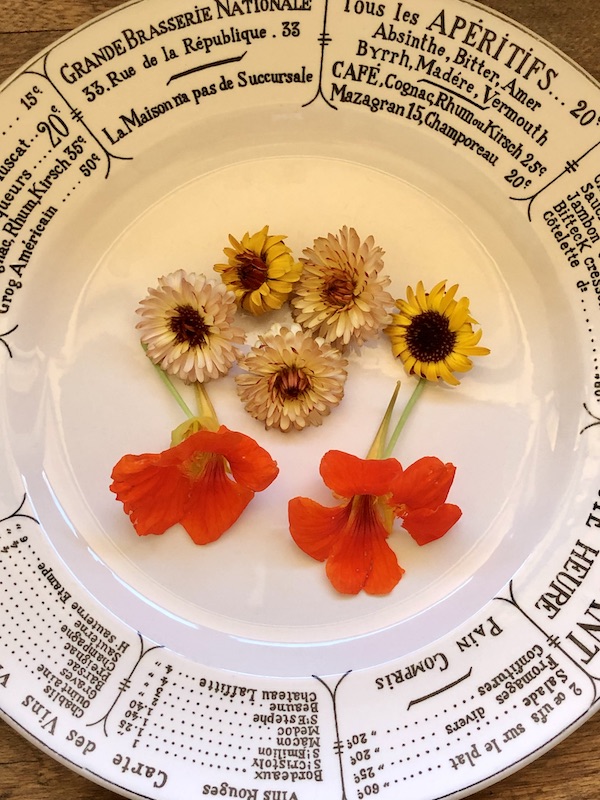
Flowers, Herbs & Vegetables
I give my chickens greens from my garden daily, including spinach, Swiss chard and lettuce. Other vegetables they love include tomatoes, pumpkin, and broccoli. (Do NOT give them avocados as they contain a component known as persin, which is lethal to chickens). In the spring, I forage my farm for wild miner’s lettuce and dandelion greens which they absolutely love to eat. Herbs are also provided from time to time, including basil, mint and oregano. Flowers such as nasturtium, calendula are also good for healthy eggs. Did you know that oregano can help prevent disease in chickens? Studies show that using oregano as well as garlic can help eliminate the need for artificial antibiotics. But if giving chickens garlic, be aware that it can affect the taste of your eggs.
Grains
I only feed my chickens organic chicken feed that has good nutritional value. Other grains you can provide include oats, barley, millet, flax, rye, and sunflower seeds. If you soak the seeds for 1-4 days they will ferment and this will add probiotics to help protect against harmful bacteria such as salmonella and E-coli. I also give my chickens foraged wild grasses which they enjoy scratching and pecking at to get the grain.
Fruits
Healthy fruits for chickens include watermelon, cantelope, cherries, berries and the like.
Calcium
Calcium is necessary to keep both the chickens and the eggs healthy. If you don’t feed them enough calcium, you will notice that the shells on your eggs are thin and flimsy. This can lead to breakage. I prefer to give my chickens oyster shells which you can purchase at most feed stores or online. You can also give them ground up eggshells, but I don’t recommend this as it could lead to the chickens pecking at their own eggs if they are looking for more calcium. A chance not worth taking, because eating their own eggs is a very hard habit to get rid of.
Providing your chickens with a healthy and varied diet will provide you with the healthiest eggs ever. Try to avoid giving them table scraps or foods with little nutritional value. And never give them food that is rotting or spoiled. To find out more about what not to feed your chickens, see 15 Things You Should Avoid Feeding Your Chickens.
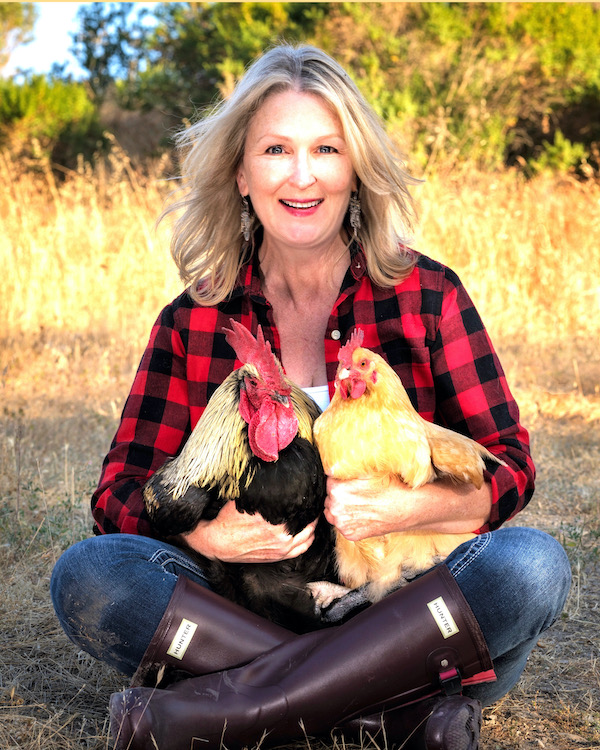
Thank you for visiting my blog! Wishing you peace, love, happiness, and healthy chickens and eggs.
-
The Real Truth About Eggs
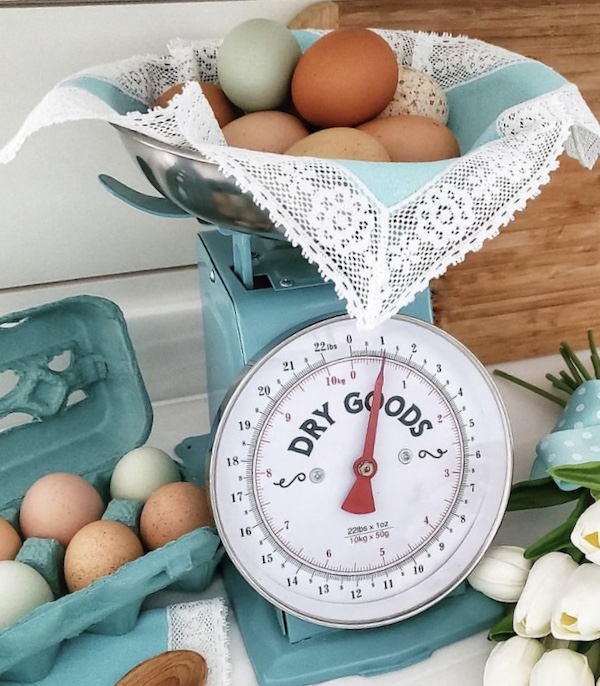
One of my favorite things about living on a farm is having a huge chicken coop full of feathered friends. I love heading up to the coop each day to retrieve my bounty of freshly laid eggs. I also love sharing them with my neighbors and friends. Having raised chickens for several years now, I tend to be asked the same questions over and over. There are many fallacies floating around out there. Just to set everyone straight, here is the real truth about eggs.
1. Don’t you need a rooster for your chickens to lay eggs?
Truth: No! You do not need a rooster. Hens lay eggs with or without a rooster. The only reason you would need a rooster is if you wanted to have baby chicks.
2. Do eggs need to be refrigerated immediately after being laid?
Truth: No, they do not. Eggs are naturally created with a bloom. The bloom is a protective layer that seals the egg and prevents bacteria from getting inside. The bloom also helps prevent moisture from escaping. Fresh eggs can be kept unrefrigerated for up to two to four weeks. Isn’t nature amazing? Washing an egg destroys the protective bloom, and that is why the eggs you buy at the store have to be refrigerated right away. They have been washed with chemicals and coated with oil. The government requires this to prevent prevent potential food poisoning from salmonella, which is more likely to occur at huge egg production facilities.
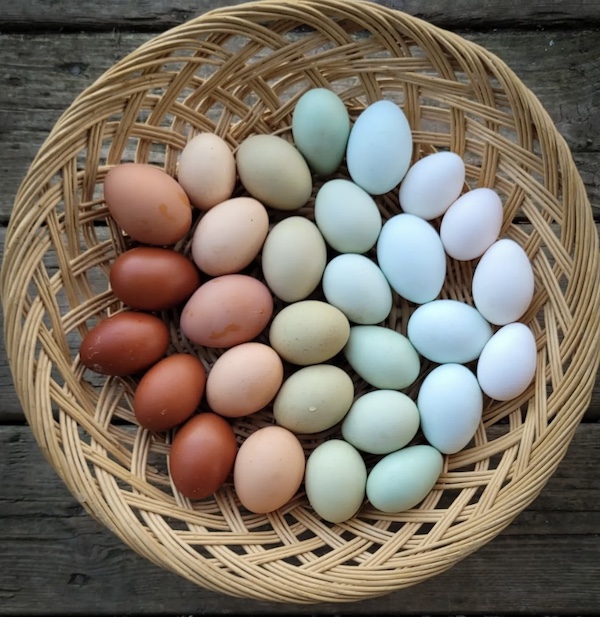
3. Does the color of an egg affect the taste? Are brown eggs the best?
Truth: Color doesn’t have any affect on the taste of the egg. Does chocolate milk come from a brown cow? Of course not. All eggs are the same on the inside, no matter what color they are on the outside. They are nutritionally equivalent.
4. Can an egg turn into a chicken?
Truth: The only way an egg can turn into a baby chick is if it is fertilized by a rooster. In order to hatch, eggs also need to be consistently kept at a very warm temperature and specific humidity level and turned regularly for 21 days. There is absolutely no way there would ever be a baby chick unless these very strict requirements were met.
5. Are egg yolks bad for you?
Truth: Egg yolks have more fat and cholesterol than egg whites, but this does not mean they are unequivocally bad for you. Some folks with health issues may want to refrain from eating them, but for most people they are fine. Talk to your doctor to find out if they are safe for you to eat.

Thank you for visiting my blog. I hope I answered any questions you have about eggs. To learn more about the difference between store-bought vs. farm-fresh eggs see which is best?. You may also enjoy 5 Super Easy Ways to Use Up Eggs. Wishing you peace, love, happiness, and beautiful vistas!
-
11 Fun Facts About Great Pyrenees
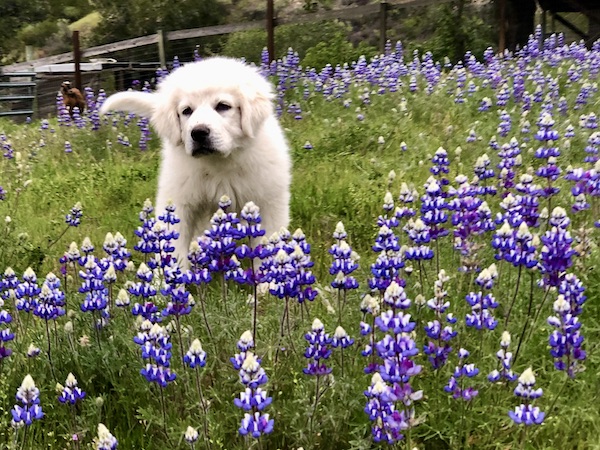
I recently adopted a Great Pyrenees puppy from a local rescue group. I had been wanting this type of dog for some time, but I really wanted to get a rescue vs. from a breeder. My chance finally arrived. The minute I saw that fluffy bundle of fur, my heart skipped a beat. When I looked into his sweet face and Jake wagged his tail, it was love at first sight.

While I knew a little about Great Pyrenees, I have recently learned so much more. They have a truly fascinating history. Here are some fun facts you may not know about this majestic breed.
- One of the oldest dog breeds, they originated in Asia. Traveling nomads are thought to have brought them to the Pyrenees mountain range separating France and Spain. Fossilized remains of the breed found in the region have dated to 1000-1800 BC!
- Mountain shepherds used these dogs to protect their flocks from predators like wolves and bears. They became beloved to shepherds and their families for their ageless devotion. According to Great Pyrenees Club of America, “when not working the flocks, you would find Patou, as he is lovingly called, laying on the mat in the front doorway of the shepherds’ humble dwellings.”
- By the 14th century, Great Pyrenees became prized by nobility, who used them to guard their grand chateaux. In fact, the Dauphin in the court of Louis the XIV adopted the Great Pyrenees as a royal dog during his reign!
- Due to their keen intellect, exceptional sense of smell and eyesight, and massive size, these dogs were counted equal to two men, with a special ability to identify and distinguish predators or unwelcome intruders.
- In 1662, Basque fishermen brought GPs to Newfoundland as companions and guardians for their new settlement.
- The Marquis de Lafayette, a French military officer who fought in the American Revolutionary War with George Washington, brought the first GPs to America in 1824 as a gift for his friend J. S. Skinner, author of “The Dog and the Sportsman”.
- Great Britain’s Queen Victoria owned a Great Pyrenees, and in 1885, the first GPs were registered with the kennel club in London and shown at the Crystal Palace.
- During the 1870s, GPs were used with other large breeds to help prevent the St. Bernard from becoming extinct due to avalanches and distemper issues in Switzerland.
- These guys are huge. As a giant breed, most GPs will need up to 24 months to reach their adult size. They can weigh anywhere tween 85 to 160 pounds, and stand 25-32 inches.
- Despite their imposing size and ability to defend against the most vicious foes, GPs are truly gentle giants. Their instinct is to care for and be kind to and patient with those in their protection. They are loving and nurturing with small, young, or sick animals.
- GPs love to patrol their borders and are known to wander off. Even now, when I take my little guy outside, he is off exploring the minute I turn my back. Thankfully, my farm is completely fenced in, and my puppy is microchipped and has a tag on his collar with all my information.
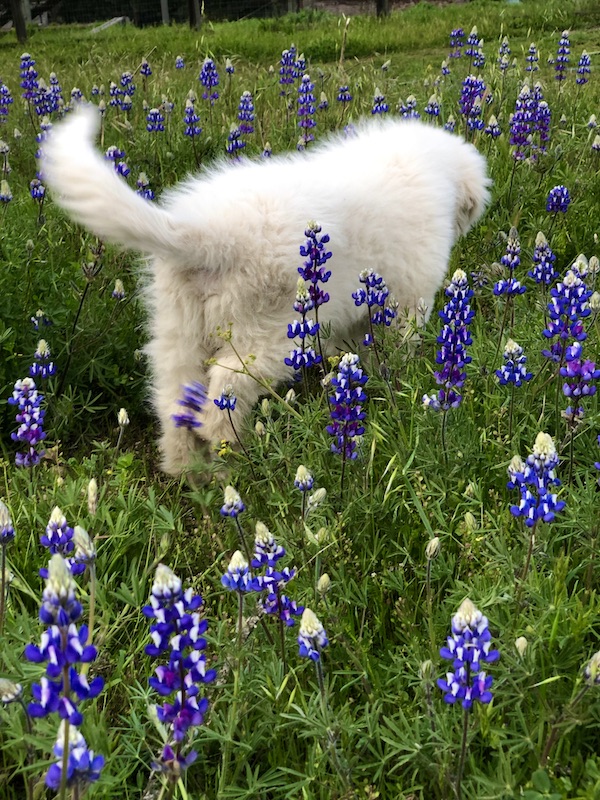
I hope you enjoyed learning some fun facts about Great Pyrenees as much as I did! For more information, see AKC Great Pyrenees. You may also like Puppy Love! Favorite Dog Quotes. Thank you for visiting my blog! Wishing you peace, love, happiness, and beautiful vistas.
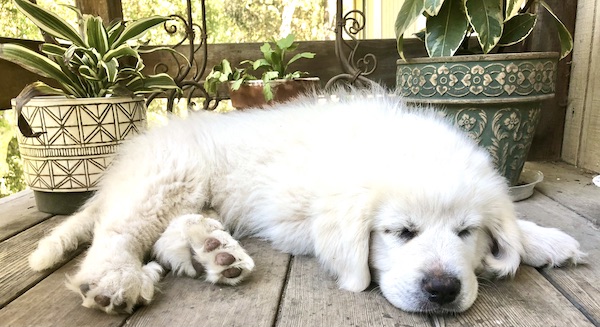
-
5 Super Easy Ways to Use Up Eggs
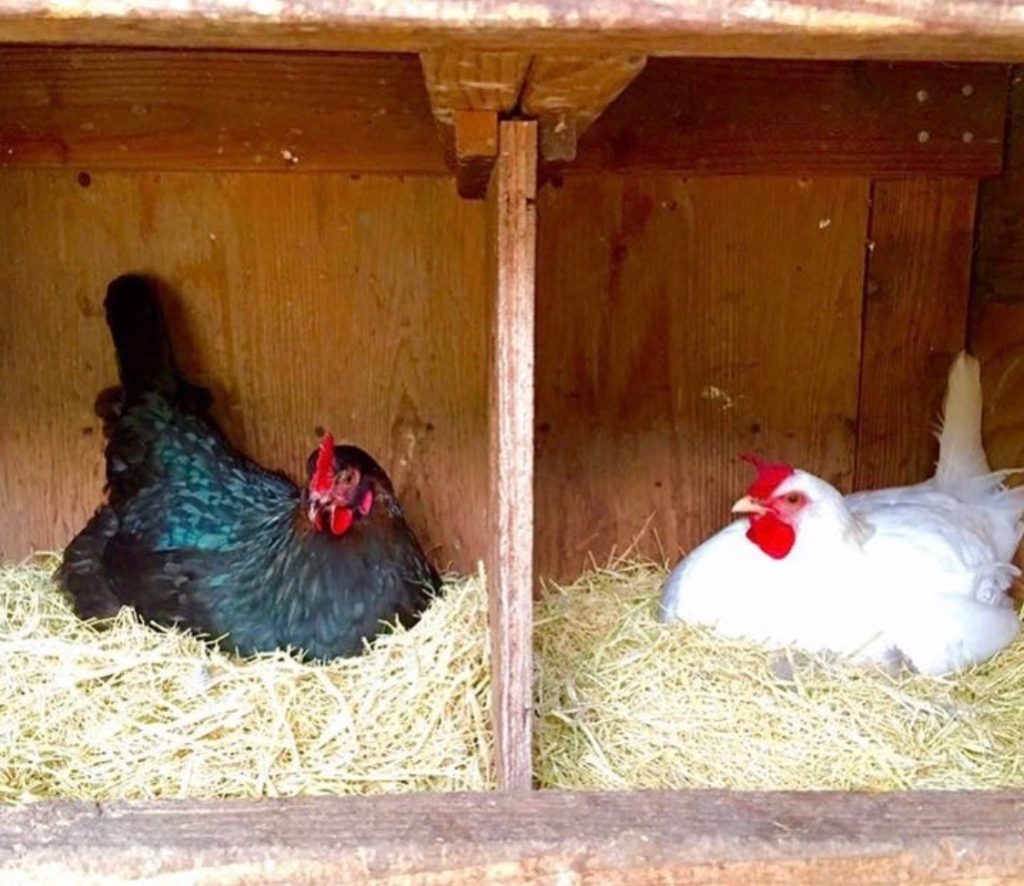
As all of us chicken parents know, summer is the height of egg production. Longer days with more sunlight start those hens a-laying. This can lead to having a big stockpile. Giving eggs to friends, family & neighbors helps, but what to do with the rest? Here are some easy tips for using up those extra summer eggs.
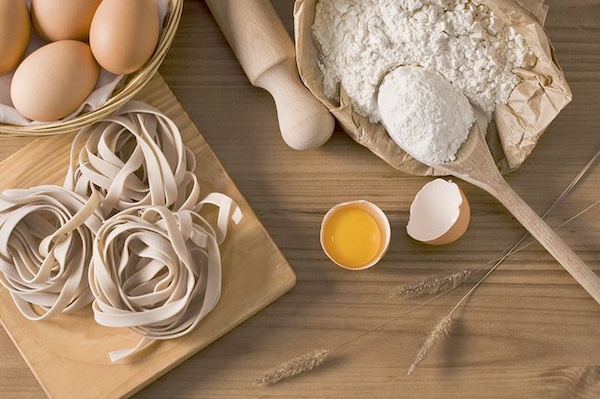
1. Recipes to Use Them UP!
Egg salad, potato salad, noodles, custards, French toast, lemon curd, quiche, and frittata are all dishes requiring lots of eggs. Deviled, fried, scrambled, or poached, there are endless possibilities.
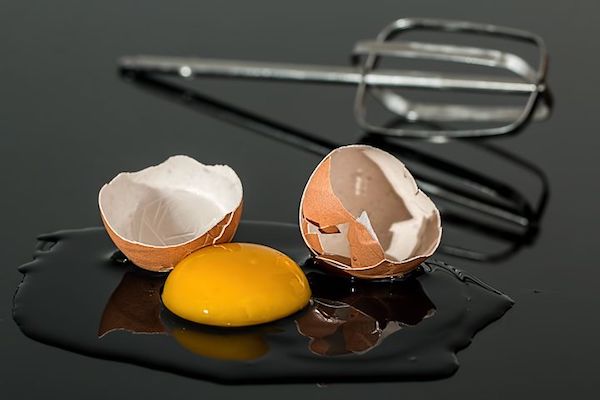
2. Freeze Without The Shell
You can’t freeze them in the shell, but you can freeze the insides. To freeze, crack yolks and whites into a bowl and mix briefly, then pour into ice cube trays. If you want to keep the whites and yolks separated you can do this too. Whites don’t need to be beaten, but yolks do and will require the addition of 1/2 tsp. salt OR 1 and 1/2 tsp. sugar for each cup of yolks, so decide if you will be using them for savory or sweet (and don’t forget to label which they are!) Once frozen, you can remove and place in a freezer appropriate storage container.

3. Freeze The Yolks
Freeze hard boiled yolks. You can’t freeze hard boiled whites or they will be rubbery and unappetizing. The easiest way to do this is to separate the white from the yolk, then drop the yolks in a pan of water so they are just covered. Bring the water to a boil, then remove the pan from heat and let stand 10-15 minutes. Drain the water and voila! The yolks are ready to freeze.
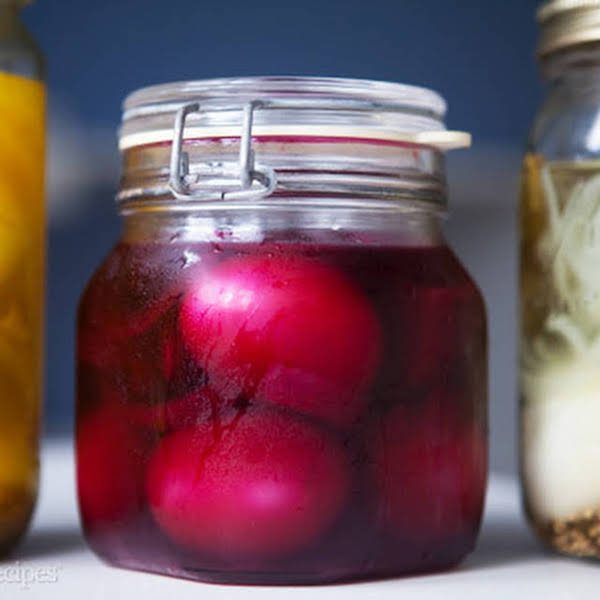
Source: Yummly 4. Pickle Them
Make pickled eggs. These are hard-boiled eggs cured in a brine. This was a technique used before refrigeration. My friend Jaclyn made some and brought them to work once for us to try, and they were delicious as well as super pretty. Here is a great recipe for pickled eggs.
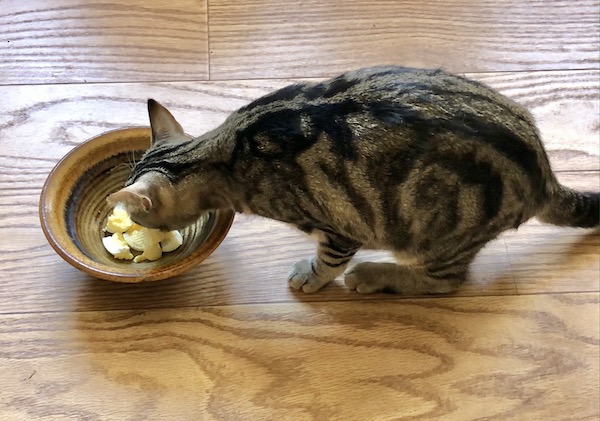
5. Give Them to Your Critters
Feed them to your pets! Cooked eggs can be fed to your dog, chickens, cats, etc. Eggs are an excellent source of protein, calcium, iron, B vitamins and amino acids. Never give raw eggs to animals due to risk for bacterial poisoning. Feeding raw could also interfere with absorption of vitamin B. Always check with your veterinarian prior to giving them to fur babies if you suspect allergies. My German Shepherd, cats and chickens love them!
Helpful Tips:
- Always label stored eggs so you know when you first stored or froze them. Include added ingredients, such as salt or sugar.
- You can freeze eggs for up to a year.
- Always thaw frozen eggs in the refrigerator; never attempt to cook them straight from the freezer.
- For recipes, 3 Tablespoons of thawed raw egg = 1 egg.
- Never go into the chicken coop barefoot!
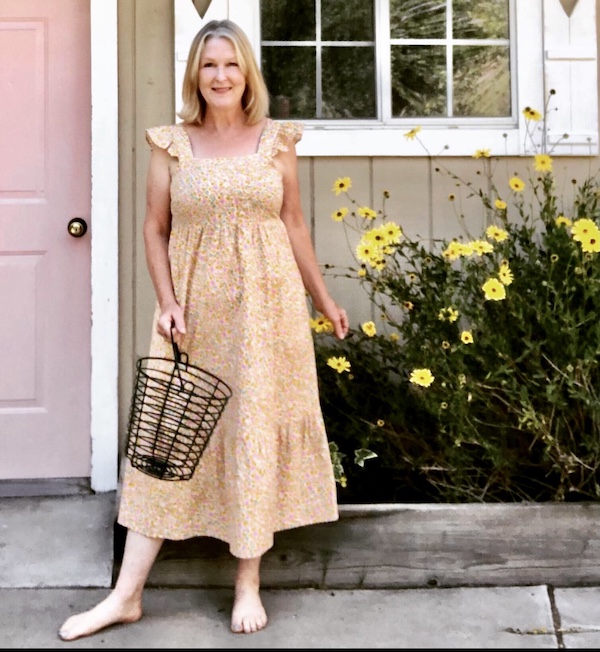
Thank you for visiting my blog! You may also like Rare Chicken Breeds and Common Chicken Sayings. Wishing you peace, love, happiness, & beautiful vistas.
-
Cottagecore 101: An Introduction for Monterey Farmgirl
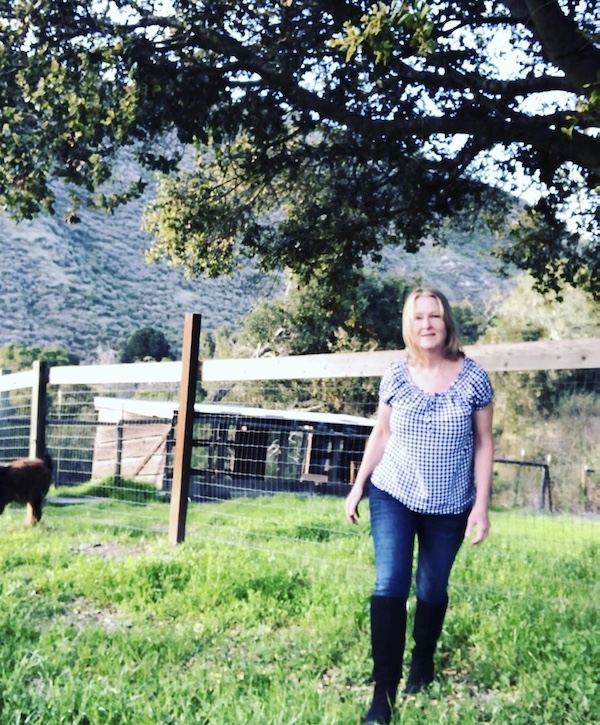
Recently, a friend of mine asked if she and her photographer could scope out my farm for a photo shoot for her business based in Carmel-by-the-Sea. “Sure thing!” I replied, although adding that the wildflowers here are a bit deflated this year due to lack of rain. “It’s going to be a cottagecore theme!” she said. At this point I admit I was a bit befuddled. What the heck is cottagecore?, I thought. I completely forgot about this word until she and the photographer arrived at my farm. The photographer and my friend starting discussing that word again–cottagecore. It still sounded very ambiguous to me. I went online to see if any of the local libraries carried books on cottagecore. Nope. It was time to get down to business. I had to know.
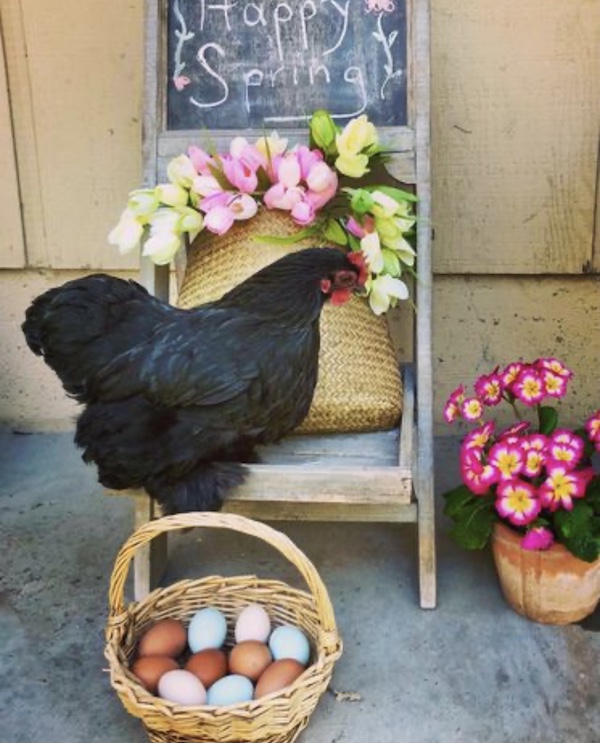
Mrs. Frizzle and our colorful eggs on the farm. According to Good Housekeeping, it is a “dreamy aesthetic taking over the internet”. Okay, still ambiguous. The article goes on to say that cottagecore “embraces the charm of the English countryside, creating an idealized representation of farm life – no matter where in the world you may live.” Hmmmm. Examples of this include tending a garden, sipping tea, and foraging for mushrooms to recreate a “pastoral fantasy”. At this point, I am thinking, “My God, I am cottagecore!” But am I? Am I unwittingly part of a trend? The answer is no. I am just living my own ding dang life with my animals on the farm, I love nature, and that is authentically who I am. No trendy Wendy here.

The Mushroom Forager’s Festival I attended in Big Sur. Blogger Sara McDaniel calls cottagecore “Narnia combined with Little House on the Prairie…a charmed, fantastical, dreamy way of life absent of modern stresses and combined with sustainable living”.
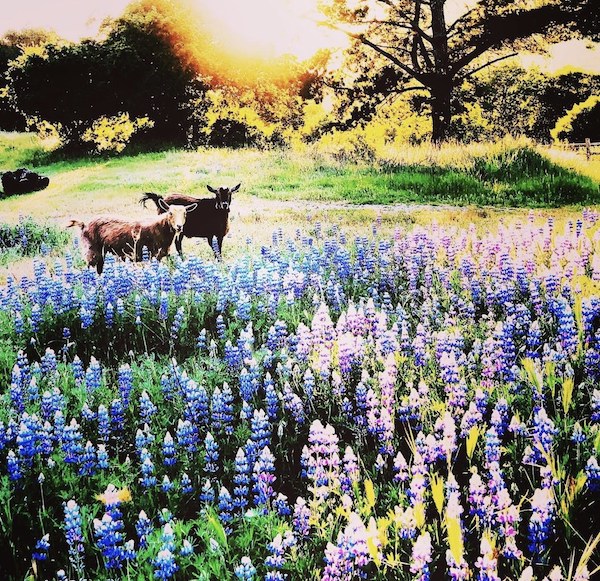
Wild lupines growing on my farm in 2020. Cottagecore is also referred to as farmcore and countrycore. Huffington Post states that it is returning to “our roots”, which they define as staying home, going green, wearing flowery dresses, writing letters, baking bread, embroidering, and everything DIY. It also stipulates that to be cottagecore, you should look and live “like you’re in some sort of pastoral painting”. But I do! I do!

My dancing goat, Yoda. I discovered that someone has indeed written a book on this topic. The Little Book of Cottagecore, by Emily Kent, has yet to be found anywhere locally. I am certain that since it is an internet sensation it is readily available online, should someone want to delve further into this. And it’s not just any old book, but a little book which sounds much cozier, does it not?
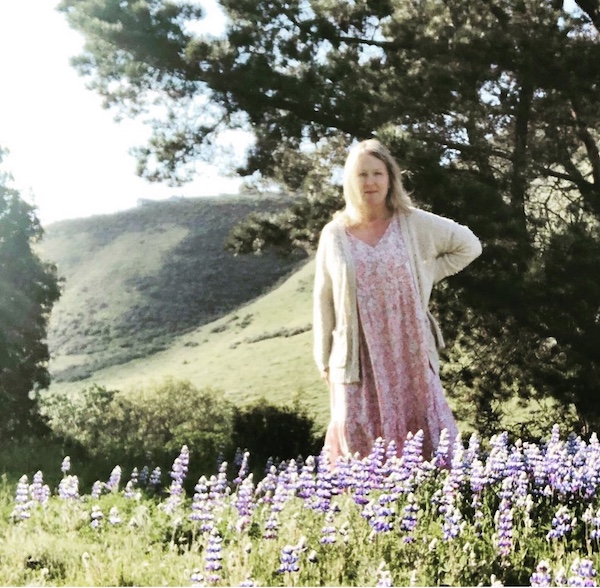
Monterey Farmgirl wearing a flowery dress in a pastoral setting on her farm in 2020. In the meantime, I am going to return to my granny square crocheting and think about making hand-dipped soy candles while the aroma of homemade banana bread wafts from my oven. Damn it, I am cottagecore.
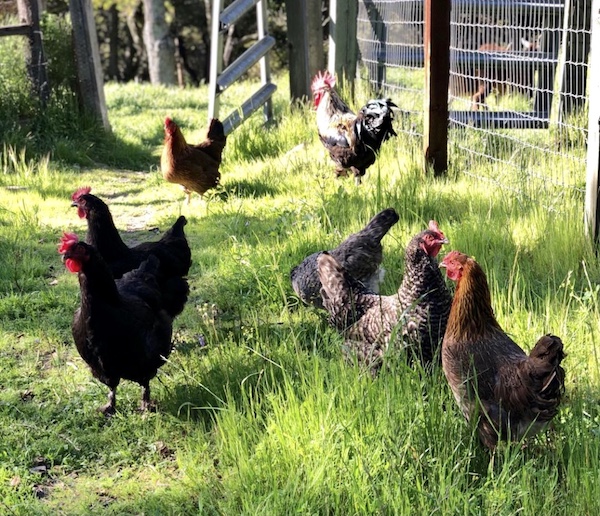
Thank you for visiting my blog. You may also enjoy reading Prettiest Wildflowers in Monterey County, From A-Z and Greatest Inspirational Goat Quotes Ever! Wishing you peace, love, happiness, and beautiful vistas!
-
Prettiest Wildflowers in Monterey County, From A-Z
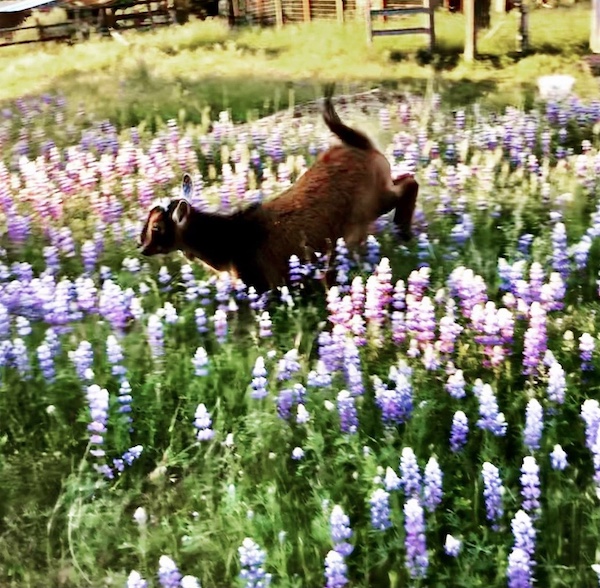
In the spring, life begins anew here in Monterey County. It is definitely my favorite time of year, because everything is lush and green, baby animals, birds, and butterflies begin to appear, and of course, my beloved wildflowers begin to bloom. I first became interested in wildflowers because I found so many on my farm as well as when I was hiking locally. Here is a list of what I think are the prettiest wildflowers in my neck of the woods, from A-Z.

A is for Amaryllis belladonna, also known as Naked Ladies. These bright pink lilies don’t appear until the leaves disappear, hence the name. It’s always magical when they begin blooming! I took this photo a few years ago at my farm. I now have many more because I keep dividing them!
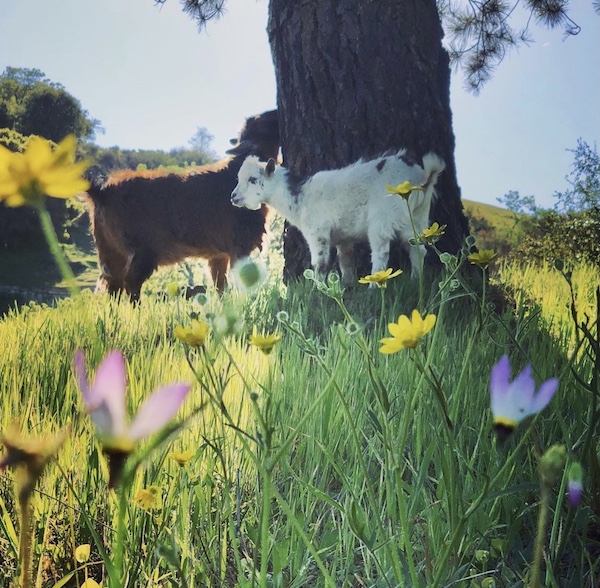
B is for Buttercup. The California Buttercups arrive soon after the Shooting Stars appear here on the farm.

C is for Ceanothus, or California Lilac. Here you see them growing near Bixby Bridge, in Big Sur. I also have them at the farm and the bees just love them!
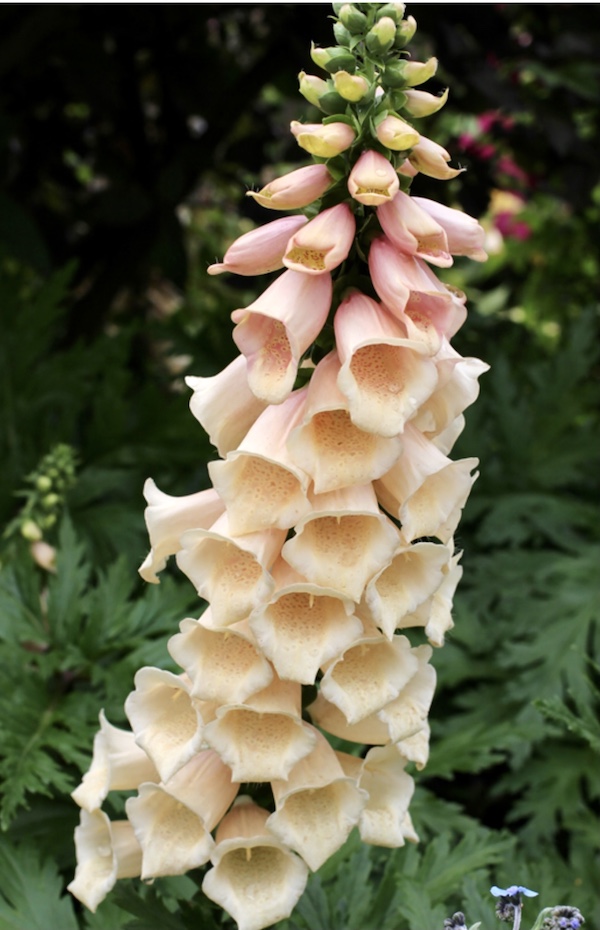
D is for Digitalis, also known as Foxglove. One thing I love about these is that gophers leave them alone! They are prettiest when grown in groups.

E is for Elegant Canyon Clarkia. Just too gorgeous for words.
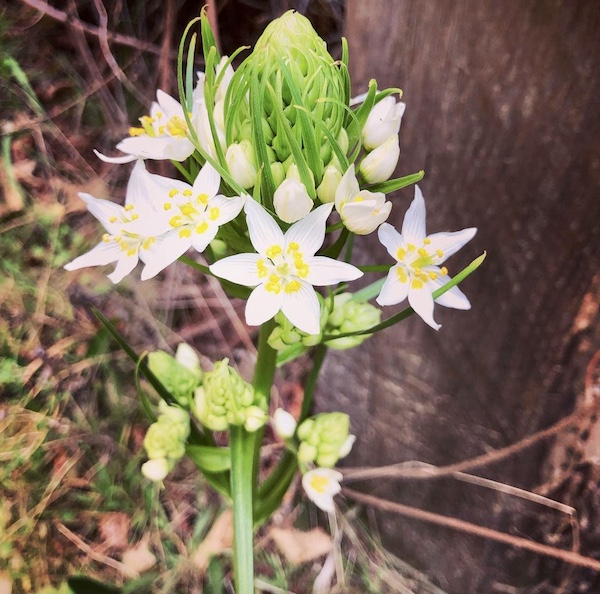
F is for Fremont’s Star Lily. I took this photo at Partington’s Cove in Big Sur.

G is for Golden Star, all known as Pretty Face. These also grow wild along my road.
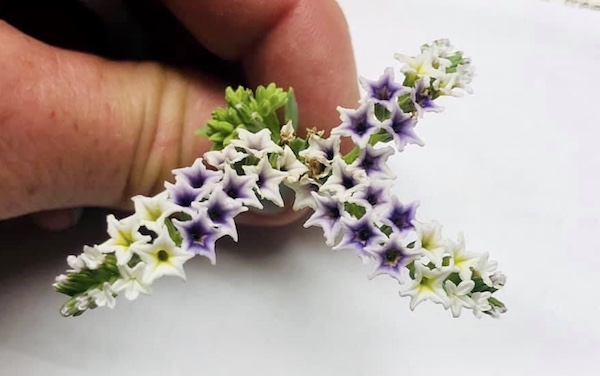
H is for Heliotrope, also know as “Seaside” Heliotrope, although this was way out here in the pastures of heaven! I just think they are so cool, how about you?

I is for Iris. Their vibrant shade is just gorgeous. You see these often down in Big Sur.

J is for Johnny Jump Ups, also known as California Golden Violets. They appear on my farm every year.

K is for Kniphofia, also known as Red-hot Poker Plant. These tall orange spikes look like candles and are quite stunning in large groups. This photo was taken near Delmonte Beach in Monterey.

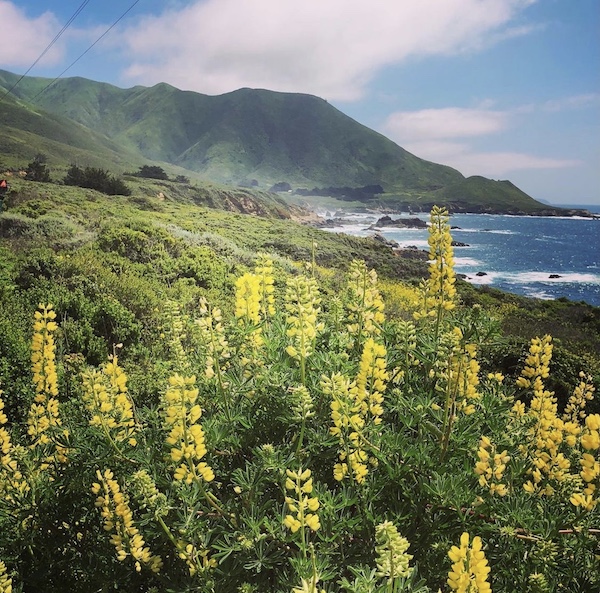
L is for Lupines. Whether purple or yellow, they are so, so pretty. They change my farm into a magical fairy tale every spring, as long as we have enough rain! Sasha enjoys posing amongst the lupines in the countryside near our farm. The second photo is of yellow lupines in Big Sur. Note that it is not the more invasive French Broom, the leaves are a giveaway.

M is for Morning Glories. I love these pink and white ones I found growing along the trail above Garrapata State Beach in Big Sur.
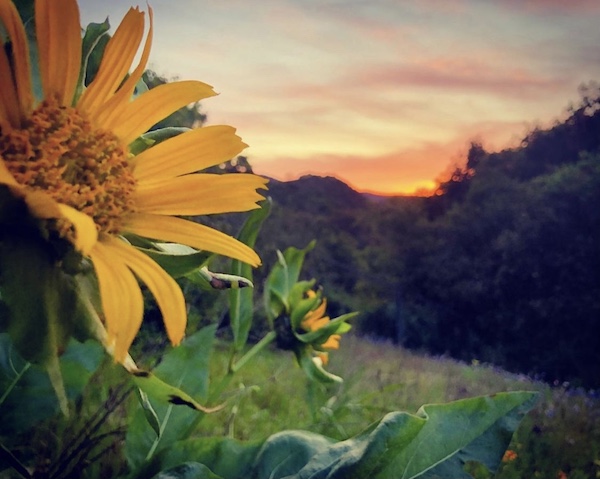
M is also for Mule Ears. They look like sunflowers. This photo was taken at my farm.
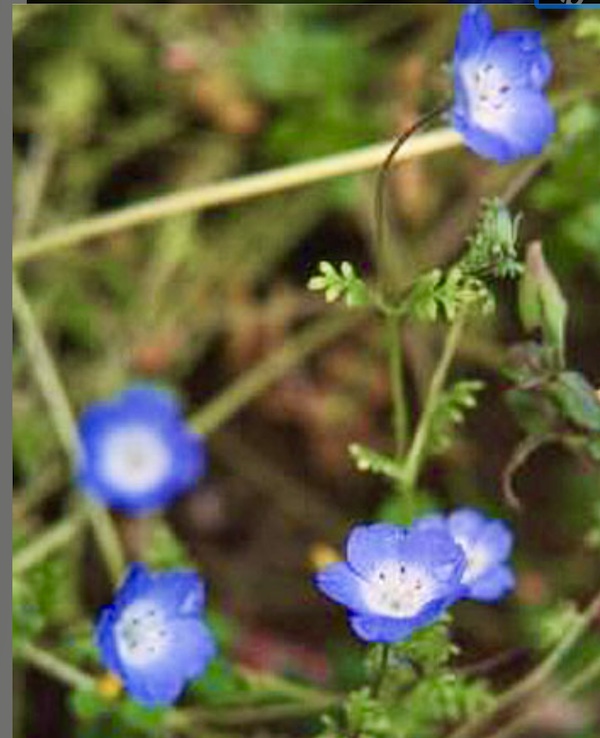
N is for Nemophila, commonly called Baby Blue-eyes. These are my favorite spring wildflowers because I just love the color!
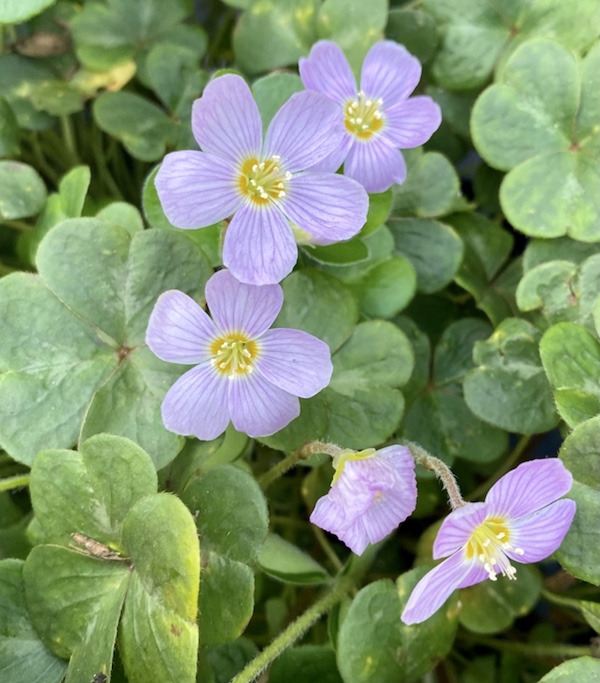
O is for oxalis, also known as Redwood Sorrel. An interesting fact about Redwood Sorrel is that when the leaves are in direct sunlight, they will start to shrivel and fold down. This is because too much sun can harm the shade loving plant.
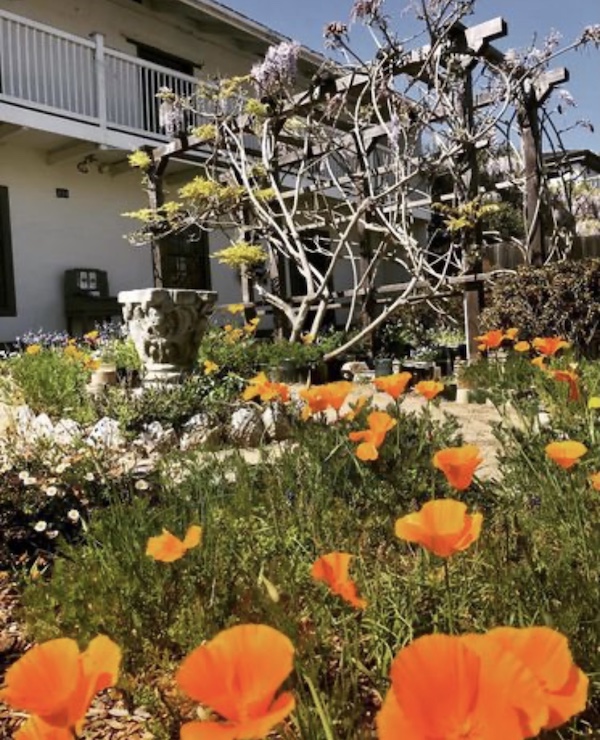
P is for Poppies. California poppies proliferate at Casa Soberanes in Monterey.

P is also for Padre’s Shooting Star, the first flowers to bloom at my farm in the spring! I adore them!
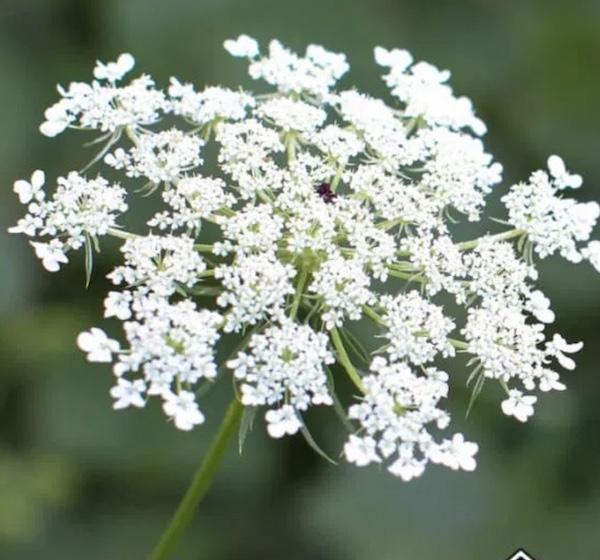
Q is for Queen Anne’s Lace. Named after the ornate lace once worn by the queen of England, this wildflower is beautiful but also quite invasive.

R is for Wild Radish. Also known as Sea Radish, White Charlock and Jointed Charlock, this is in the family Brasicaceae. This photo was taken at Lovers Point in Pacific Grove.
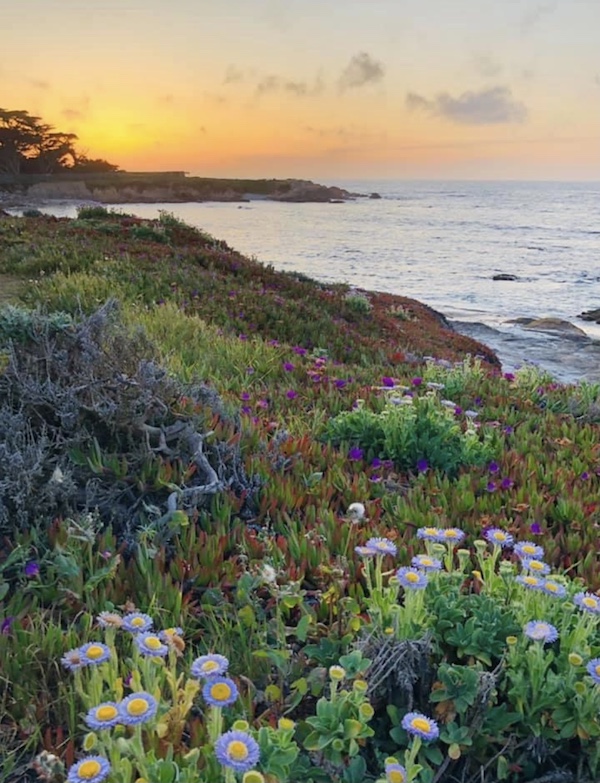
S is for Seaside Daisies. Pebble Beach is the prettiest at sunset, especially when there are wildflowers.

S is also for Sea Statice. Love the crisp color of these blooms with the ocean as a backdrop. This is near Delmonte Beach in Monterey.

T is for Thistle. This photo was taken just north of Rocky Point in Big Sur.
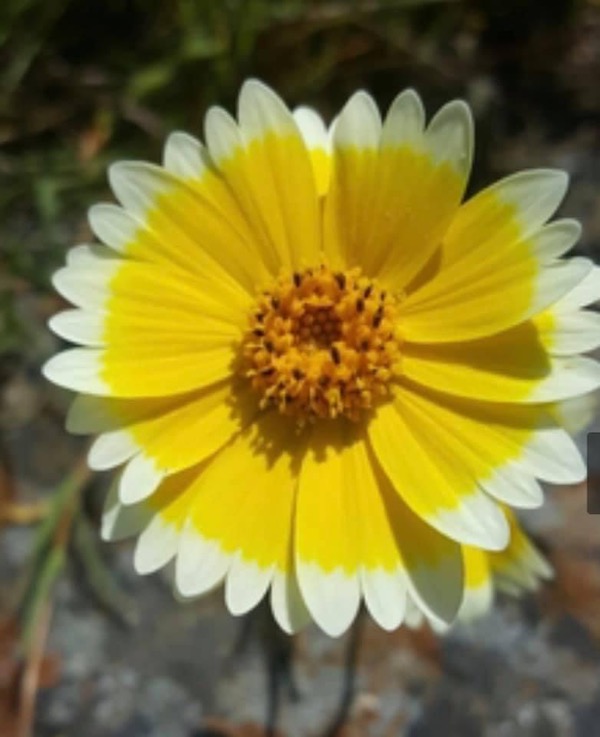
T is also for Tidy Tips. These grow in the pasture near my neighbor’s home. I think these are just the prettiest tiny flowers!

U is for Uropappus, also known as Lindley’s Silverpuffs. They kind of look like dangerous dandelions. Regular dandelions turn from butter yellow to fuzzy white balls that you can make a wish on. These flowers turn into seed needles, and would be considered highly ineffective for wish making. They are, nonetheless, very pretty, (in a scary way).
.

V is for Vinca. This photo was taken at Ragged Point in Big Sur. The monarch butterflies were loving it!
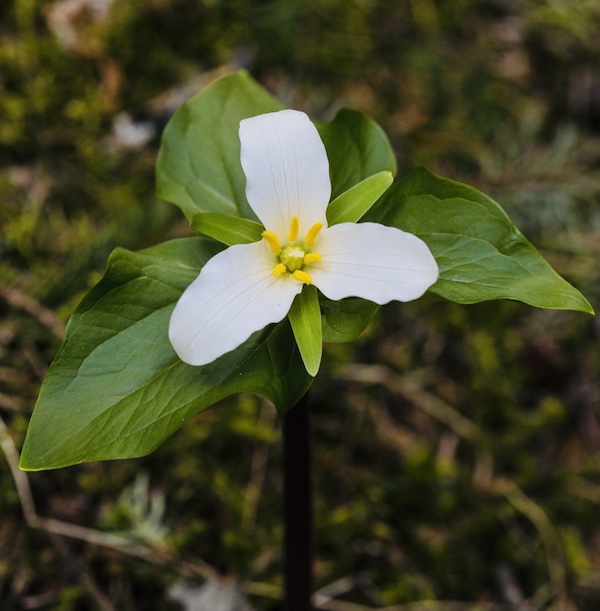
W is for Wakerobin, also known as Western Trillium. It loves moist, shady, wooded areas.
X….so I will admit, I had a heck of a time trying to think of a local wildflower beginning with the letter x. I did some research, and success! Apparently Xerophyllum tenax, also known as Bear Grass and Indian basket grass, grows here in Monterey County! I don’t have any photos, but for more information, see Xerophyllum tenax. I learned that this plant is important for fire ecology. Apparently, is has rhizomes that survive during fires and it thrives with periodic burns. Who knew??
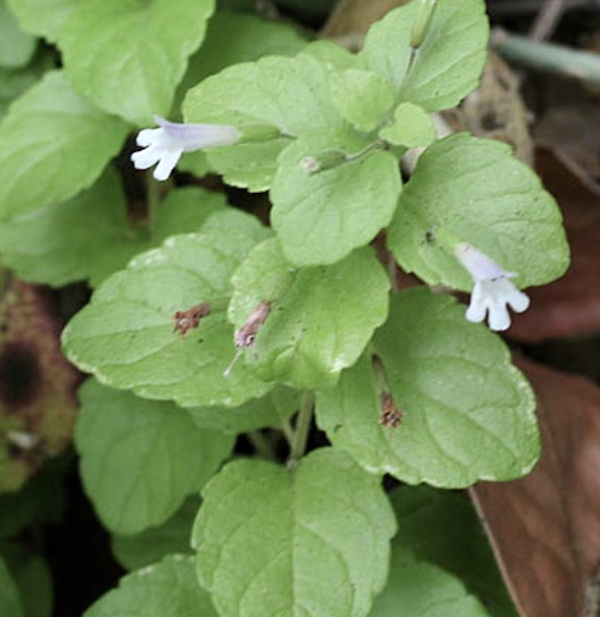
Y is for Yerba Buena. It may not be the prettiest, but it made my list because it’s still important. My friend Brian always points this out to me while hiking. For those of you who love to drink it in tea, here is what it looks like in nature!
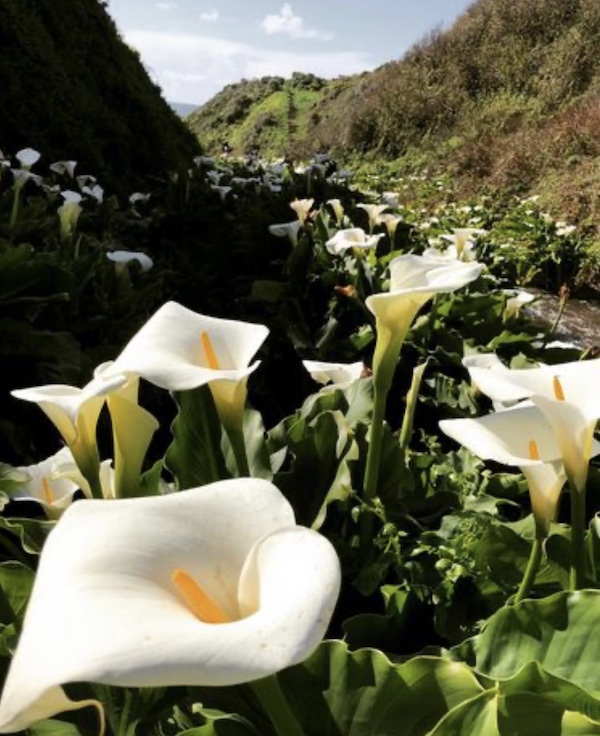
Z is for Zantedeschia aethiopica, also known as Calla Lily. My favorite place to see them in the spring is Calla Lily Valley in Big Sur. This is one of the prettiest places to visit in Monterey County!
There are so many wildflowers out there I have yet to find. I love them not only for their beauty, but also for their enchanting names. Who wouldn’t love flowers called “Witches’ Teeth”, “Yawning Penstemon” and “Snouted Monkeyflower”?
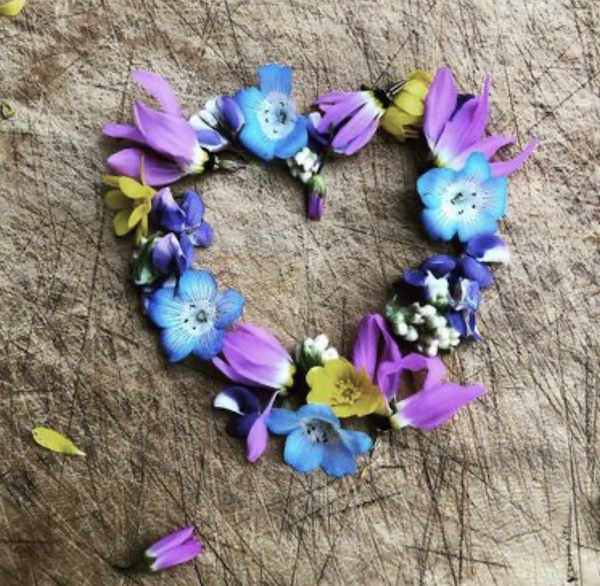
Thank you for visiting my blog! I hope you enjoyed viewing the prettiest wildflowers in Monterey County. I would love to hear which are your favorites! You may enjoy learning more about our wildflowers by reading Monterey County Wildflowers, A Field Guide, by Rod M. Yeager, MD and Michael Mitchell. You may also enjoy Seven Best Places for Wildflowers in Monterey County! Wishing you peace, joy, happiness, and beautiful vistas!
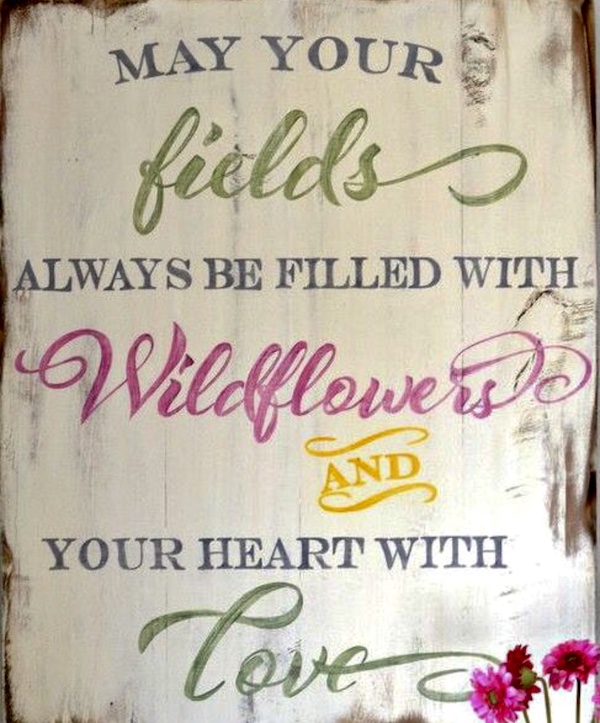
Source: pinterest.com -
Greatest Inspirational Goat Quotes Ever!
I have been a goat Mom for four years now. My goat family began with my two girls Aliyah and Anushka, and we recently welcomed a Dwarf Nigerian buckling (baby boy goat) named Yoda. Caring for goats has been a wonderful experience. Joyful, lovable and playful, goats bring such happiness and fun to life. They are a non-stop source of amusement. If you are looking for some inspiration to brighten your day, here are the greatest goat quotes, puns and sayings ever!
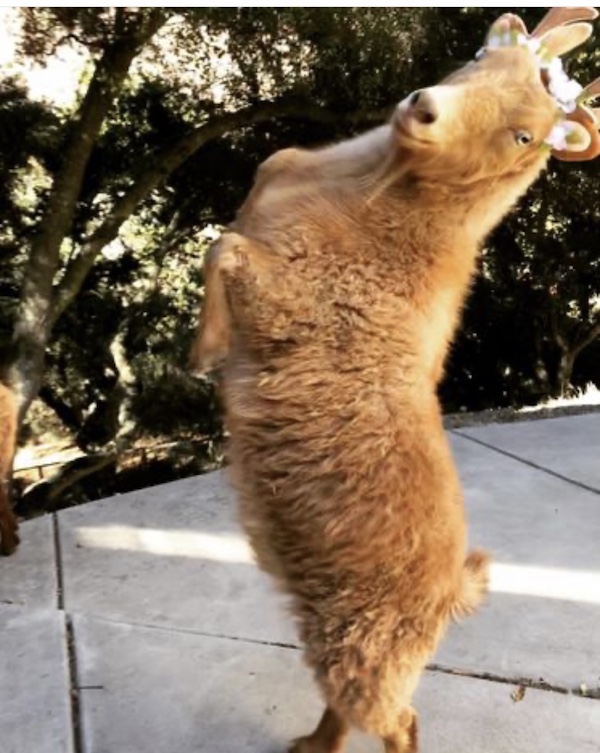
Take that bad day & headbutt it in the face!

My goats are not contemplative, accepting, or introspective. They are the Greek chorus of my farm, sometimes of my life. They watch me closely and remind me that I am foolish.~Jon Katz
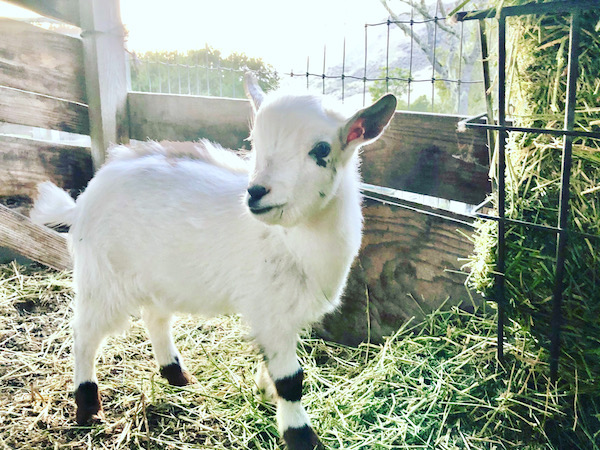
Goats: cheaper than therapy.
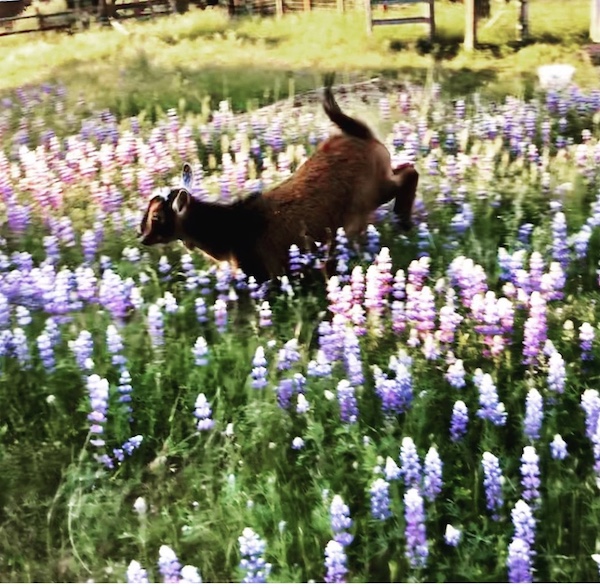
I want to go about like the light-footed goats.~Johanna Spyri
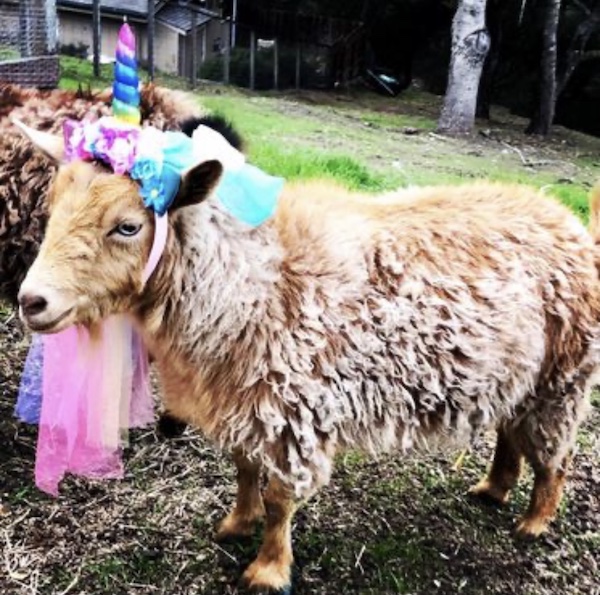
In the silence, I could hear the distinct sound of goats maa-ing in the barn. Lying there listening to them made me smile, too. I’d always loved goats – every one of them different from every other one, and all of them goofy and playful.~Steve Watkins
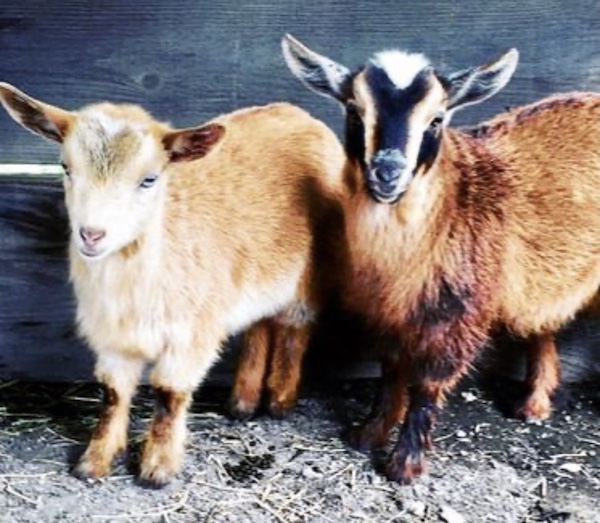
Whatever floats your goat.

Stand back, I goat this.

Be the goat in a world of sheep.
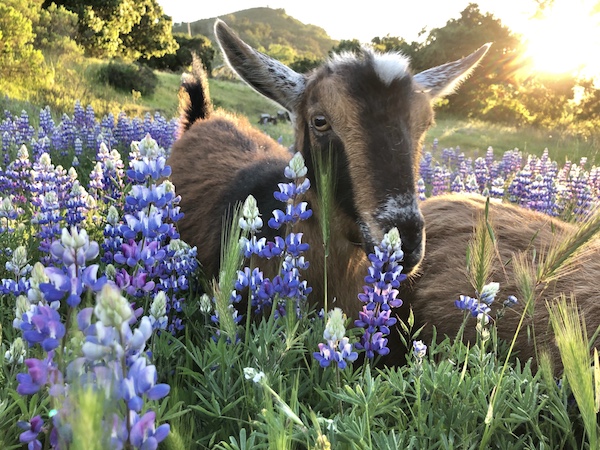
It’s good for a person to be terrorized by a goat. Hard to get high and mighty when there’s something chasing you for vegetables.~Natasha Pulley
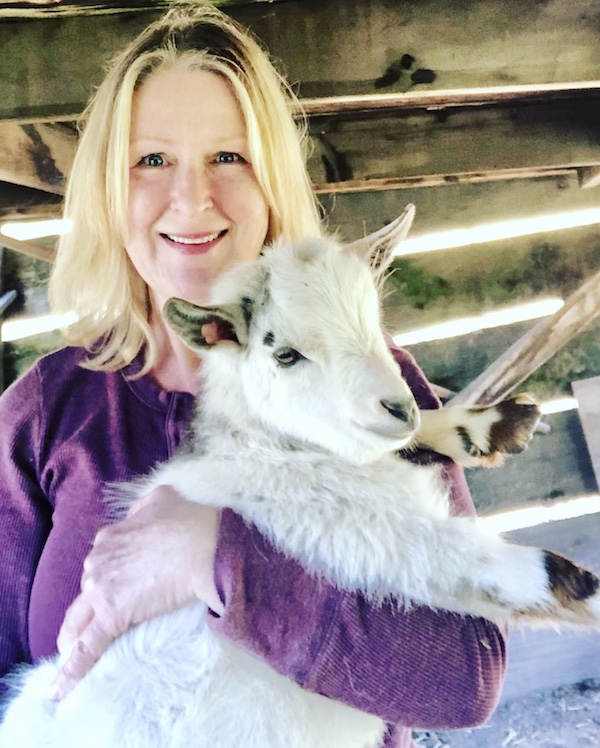
Sorry, I didn’t mean to get your goat.
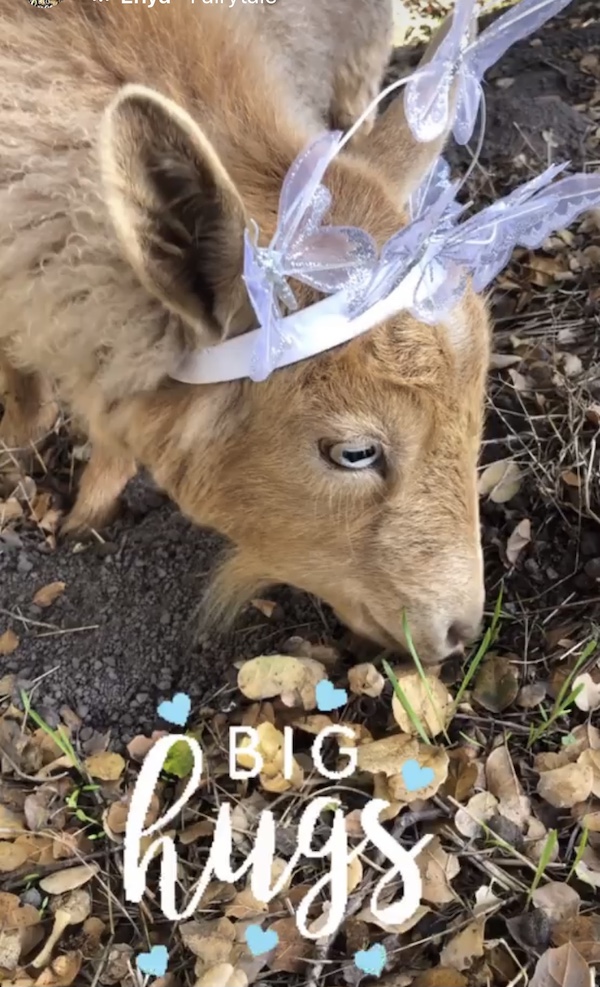
Thank you for visiting my blog! Goats are the greatest! I hope you enjoyed my goat inspiration. You may also like reading My Cozy Covid Christmas on the Farm. Wishing you peace, joy, and beautiful vistas!
-
My Cozy Covid Christmas on the Farm
If you read my last post you will know I am really feeling the Christmas spirit this year. The Covid quarantine has really put me in the mood for celebrating a holiday that we often associate with togetherness and fun. I have been listening to Christmas music (since before Thanksgiving), and have put all my decor up and dressed my fur and feather babies in their best holiday finery. Since Covid has stymied my ability to invite people over to enjoy our farm festivities, I thought I would just post some photos on the blog. I hope you enjoy them!

Sasha is not a fan of frivolous attire, but she will tolerate things like this red plaid bow on her collar.

The kitties are enjoying snuggling up on cozy Christmas throws.

Covid can’t stop us from having fun on the farm. Even the chickens are feeling festive!
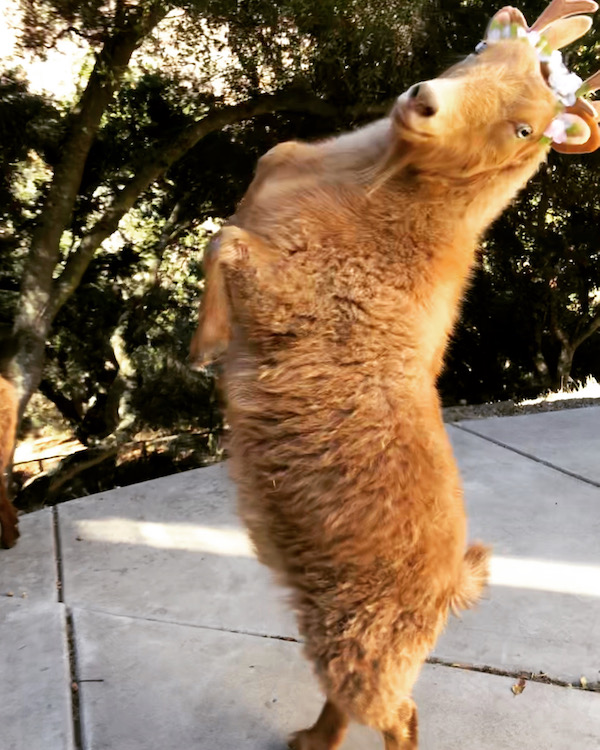
The goats are pretending to be reindeer in hopes that Santa will hire them to pull his sleigh.
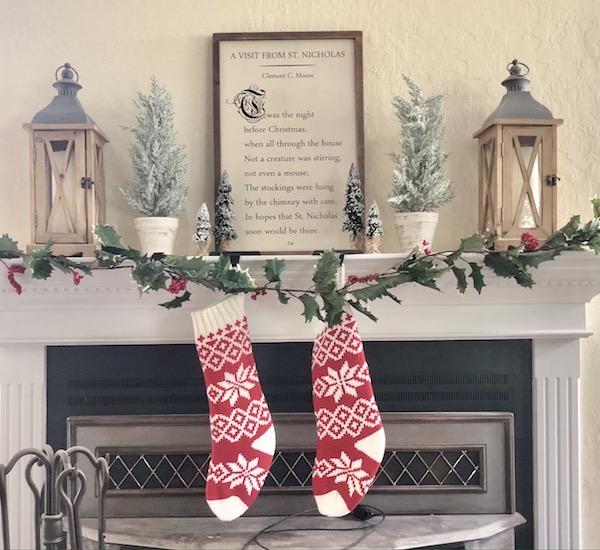
The stockings have been hung by the chimney with care.

The kitchen is ready for baking some holiday goodies! My friend Brian gave me the California holly, also known as Christmas berry-he has it growing in his yard.

Holiday poinsettias in an antique wood bucket from Argyle, Wisconsin my Dad gave me long ago. The wreath is from Hobby Lobby.

Georgie enjoys hanging out by the Christmas tree.

My doormat reminds me to keep my spirits bright!

A snowman and some tiny trees on a vintage chippy table I found at a thrift store in Monterey.
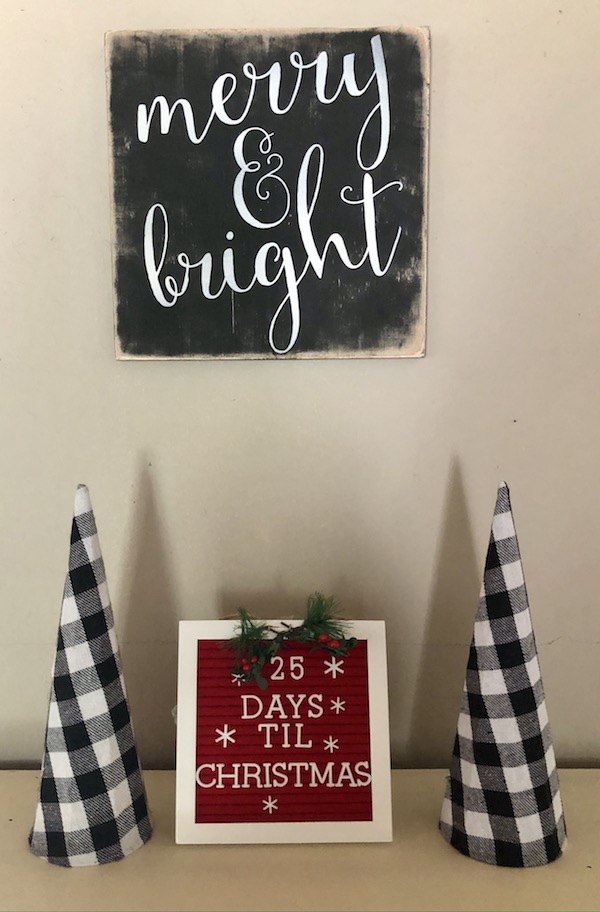
Now we have only three days “til Christmas! I found this cute little sign at Target.
 Sometimes, you just need a warm cup of cocoa or tea while you snuggle up and watch Christmas movies. My favorite is “It’s a Wonderful Life”!
Sometimes, you just need a warm cup of cocoa or tea while you snuggle up and watch Christmas movies. My favorite is “It’s a Wonderful Life”! If I start feeling the quarantine blues, I look at my Christmas cards and remind myself that it won’t be long before I can visit my friends and family again.
If I start feeling the quarantine blues, I look at my Christmas cards and remind myself that it won’t be long before I can visit my friends and family again.
With sons Nick & Peter at a previous Christmas. Missing all my boys. Thank you for visiting my blog. I hope you enjoyed my snapshots of my cozy Christmas on the farm. You may also enjoy Christmas in Carmel-by-the-Sea.
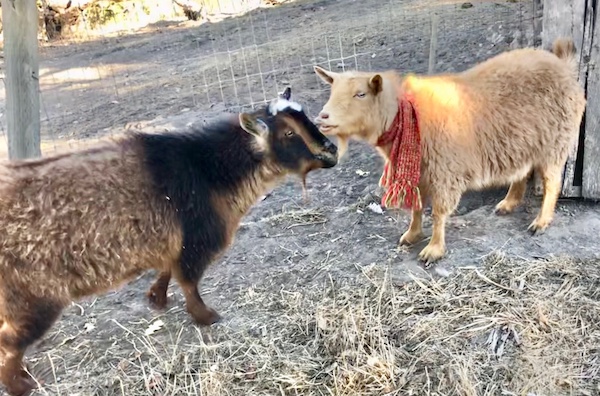
Wishing you peace, love, joy, and Christmas kisses from Aliyah and Anushka the goats.
-
Spring Fling in Monterey County
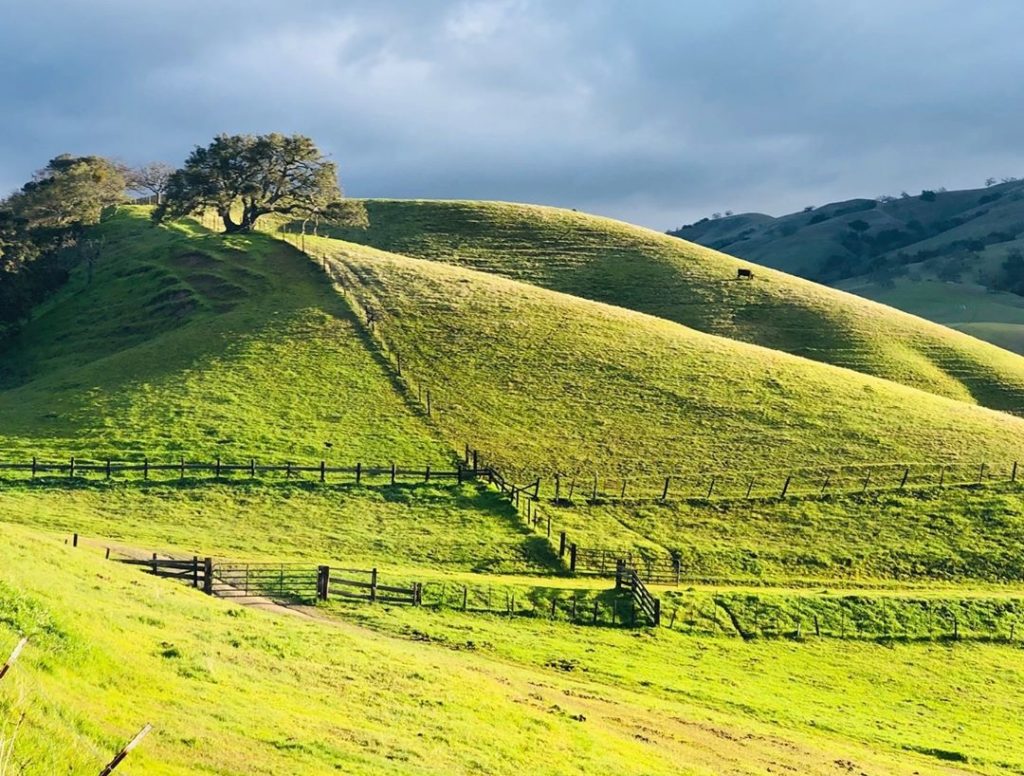
Blossom by blossom the spring begins.~Algernon Charles Swinburne. It’s always beautiful when spring comes to Monterey County. The dry gray hills are suddenly a rich, velvety green, and trees and flowers start to bud and blossom. Seasonal creeks begin to fill the air with the sound of water rushing over and spilling through rocks, and suddenly, quail families and white tailed bunnies make their appearance.
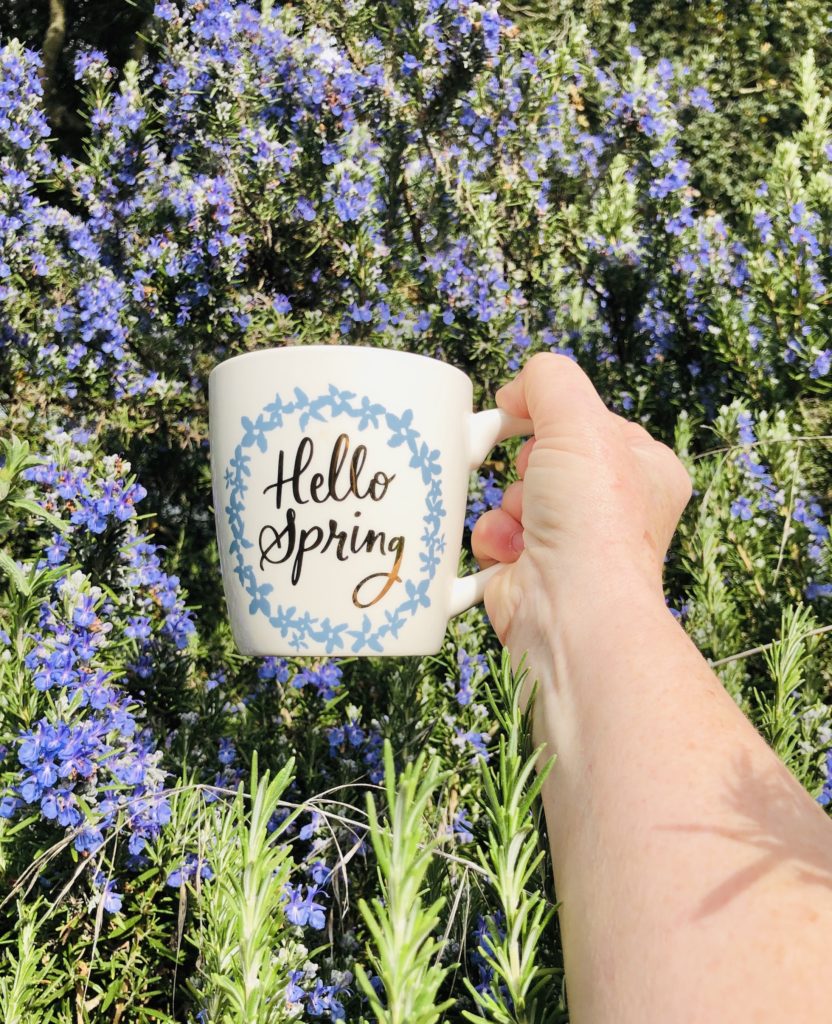

On my farm, I start to see small wild jonquils and pink shooting stars dancing over the hills. And seemingly overnight, my rosemary shrubs become covered with fat lavender flowers.
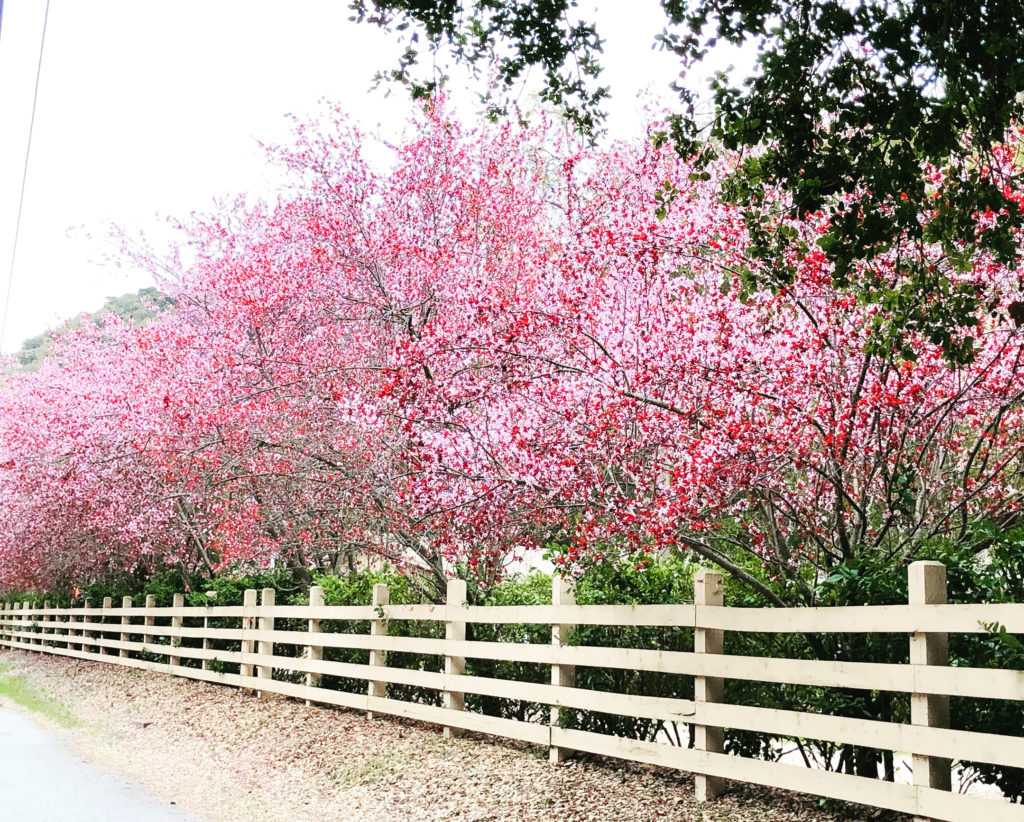
The roads are suddenly framed by pink and white blossoms.
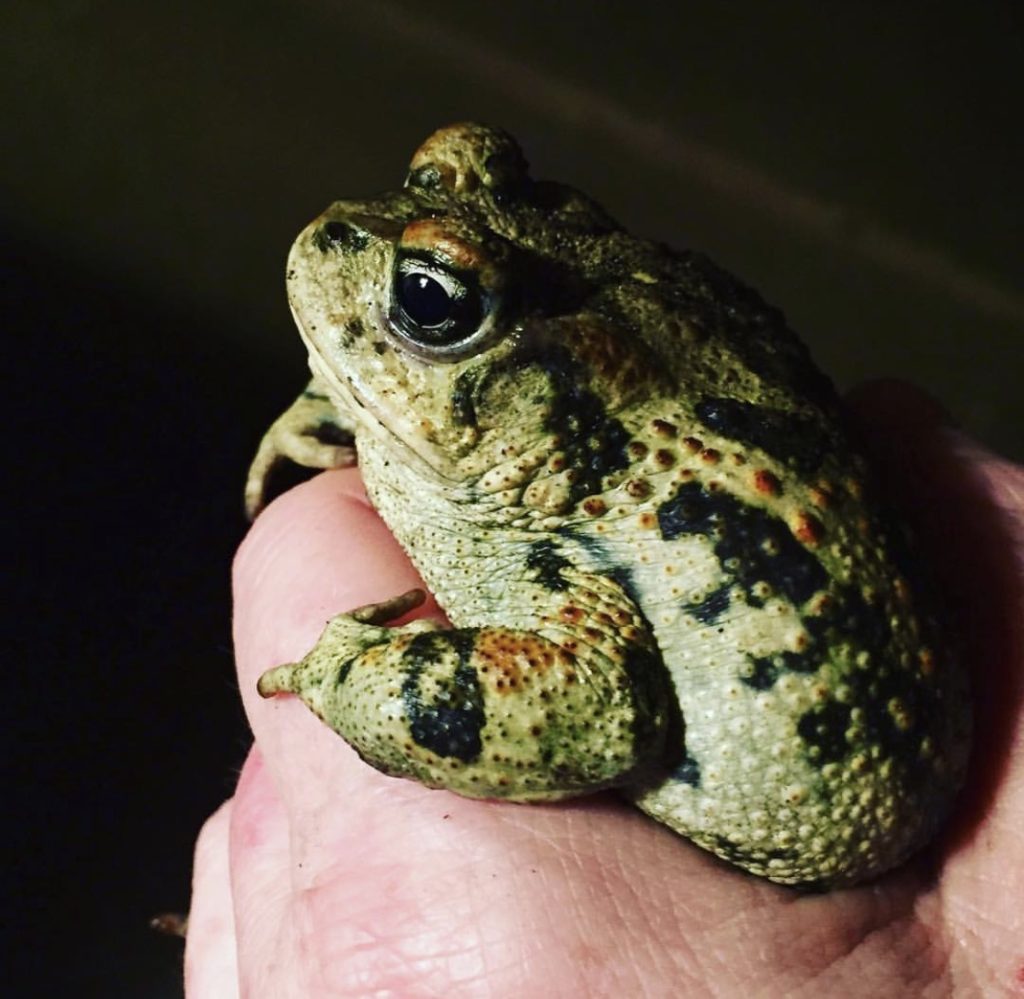
Frogs begin their mating chorus from the creeks, and sometimes I find a lone vagabond toad wandering about the farm or in my flowerbeds. This one reminds me of “Hoppy Toad”, the top hat wearing character in the Raggedy Ann books I read as a child.
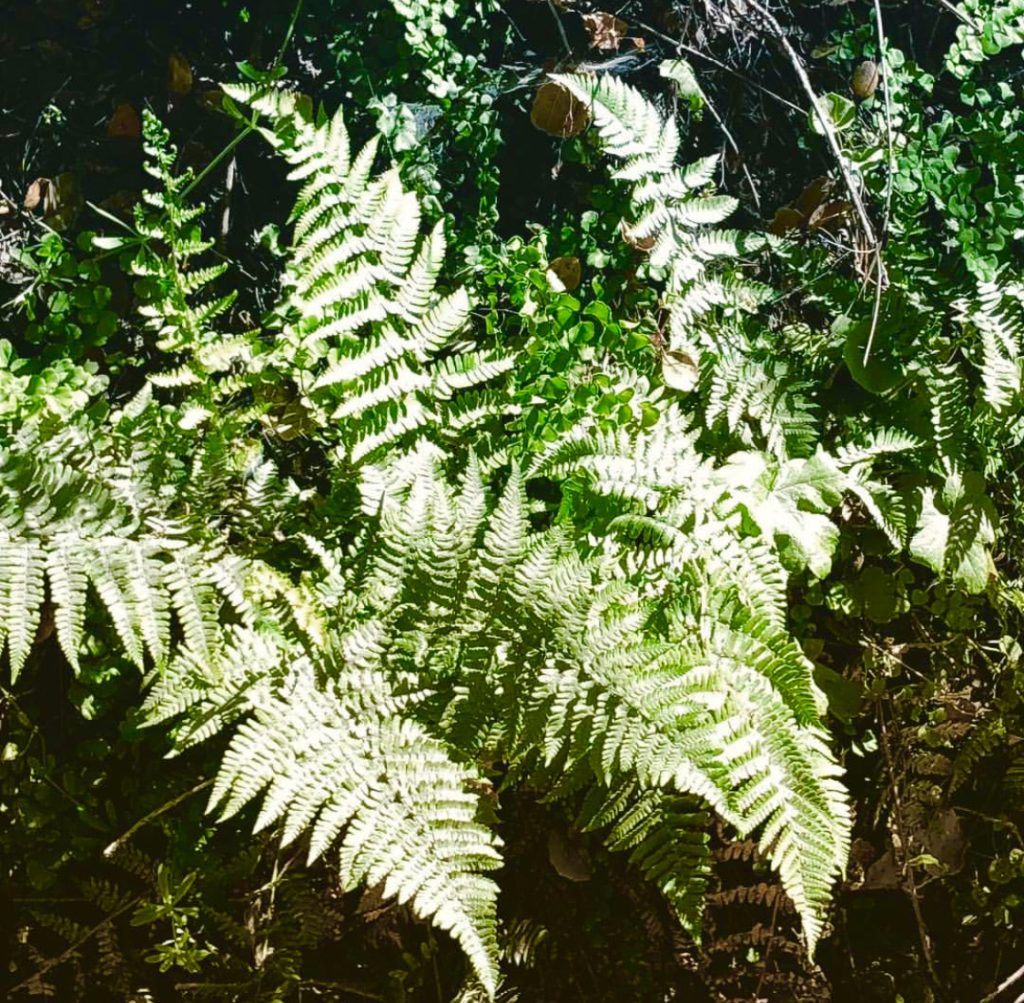
Lacy fern fronds begin to unfurl from the canyon walls, and trilliums start to cover the forest floors.
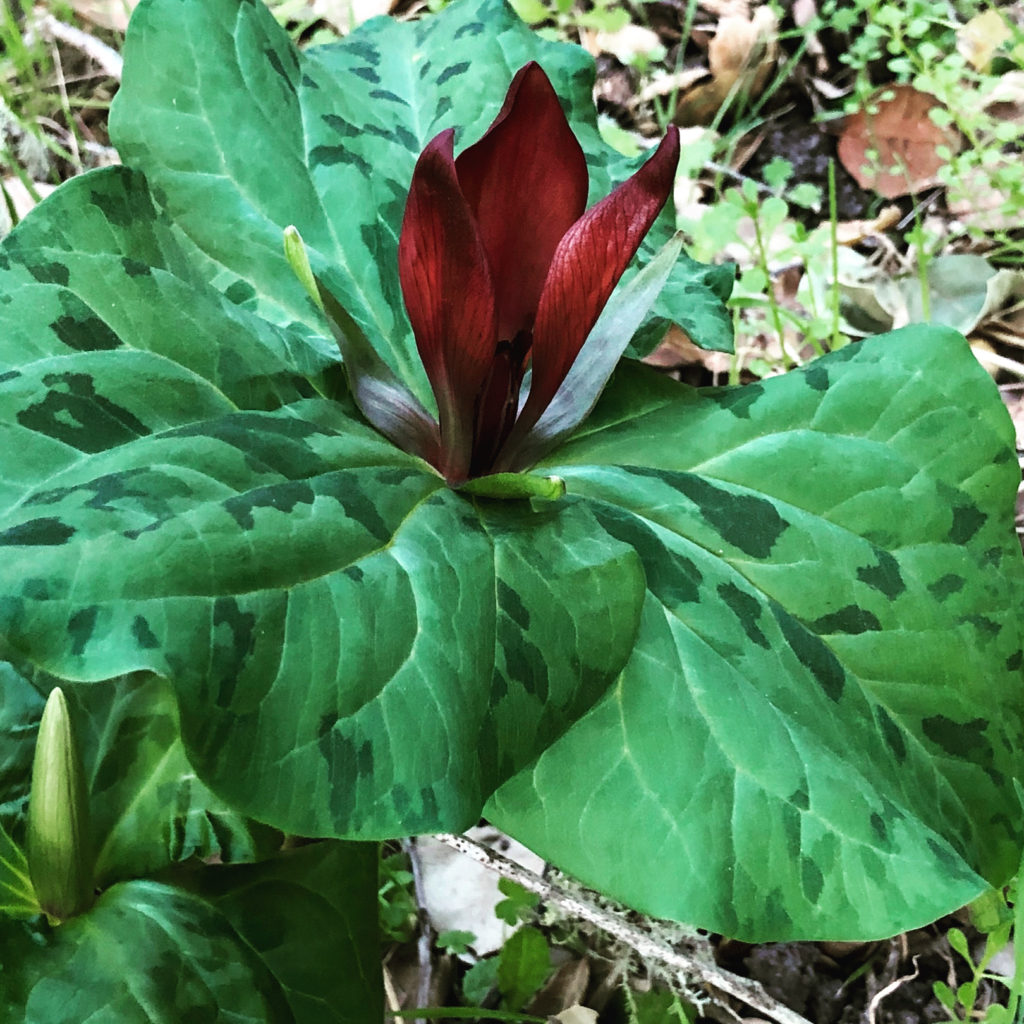
My half Angora, half Nigerian goats begin to shed their long fur, and start to look like they have dreadlocks!
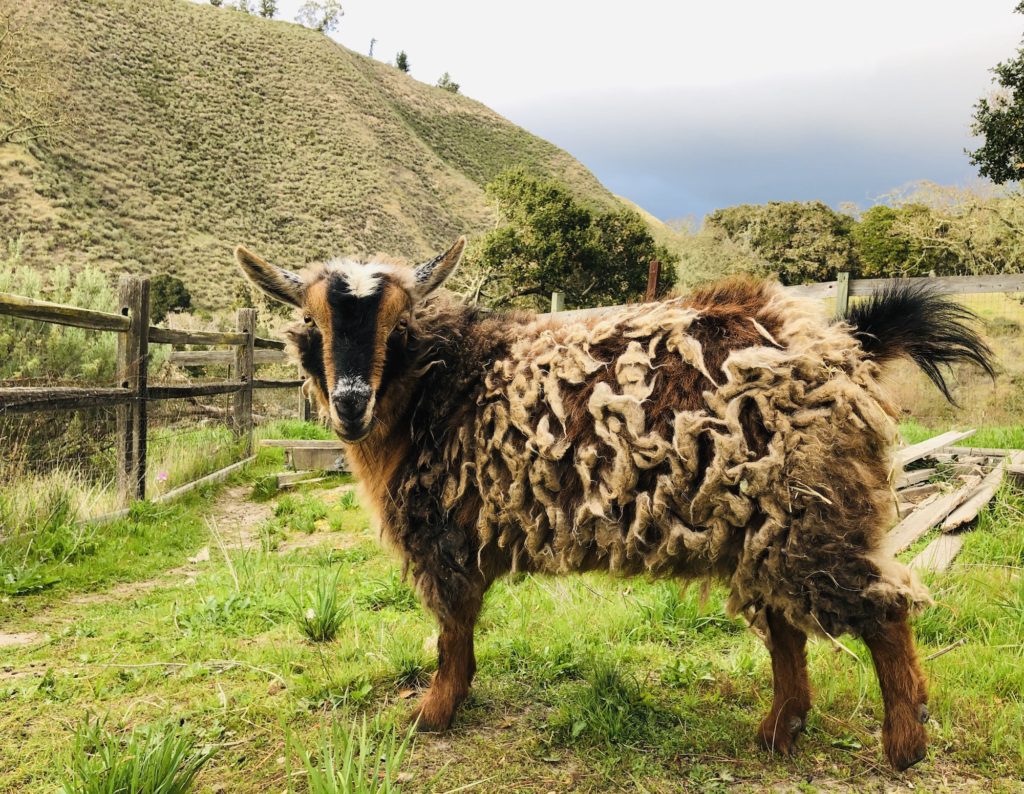
Spring makes me feel hopeful. A friend of mine put it very succinctly. She explained that despite everything going on in the world, life continues to renew itself. She further added, “Rebirth and life anew is always so hopeful because it means we have a chance to make changes, and hope that things will get better.”

L. M. Montgomery confirms, “That is one good thing about this world…There are always sure to be more springs.”
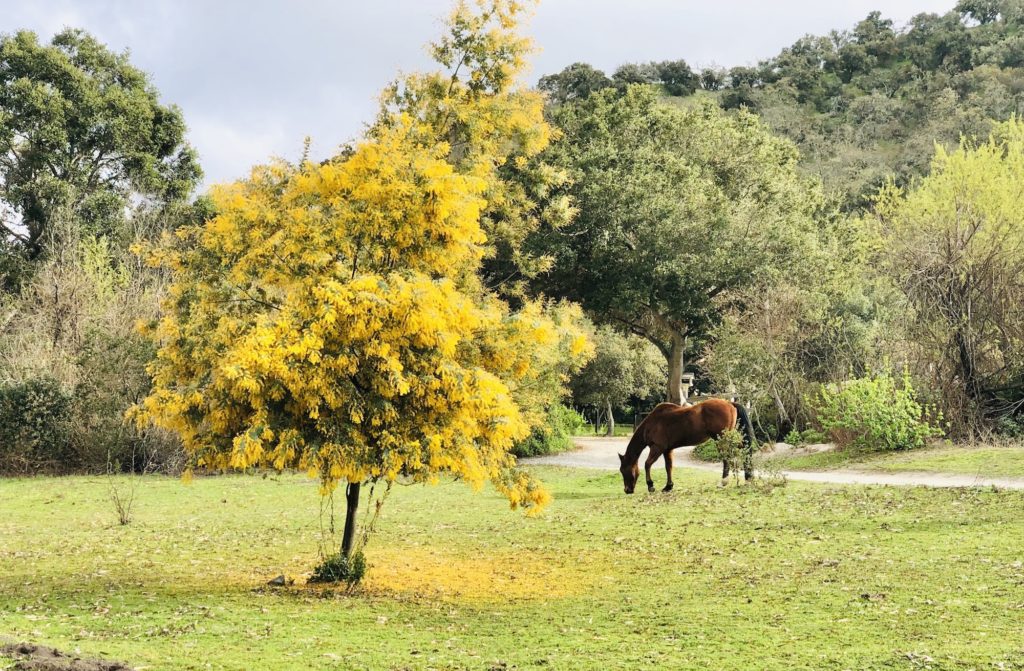
I can’t think of anything lovelier than watching horses graze peacefully near my home. Green grass, trees dripping with flowers, fresh air and sunshine are what spring is all about.

Those of us living in Monterey County have so much to be grateful for. For those of you living in colder climates where spring seems like a distant dream, heed the words of Anita Krizzan: Spring will come and so will happiness. Hold on.
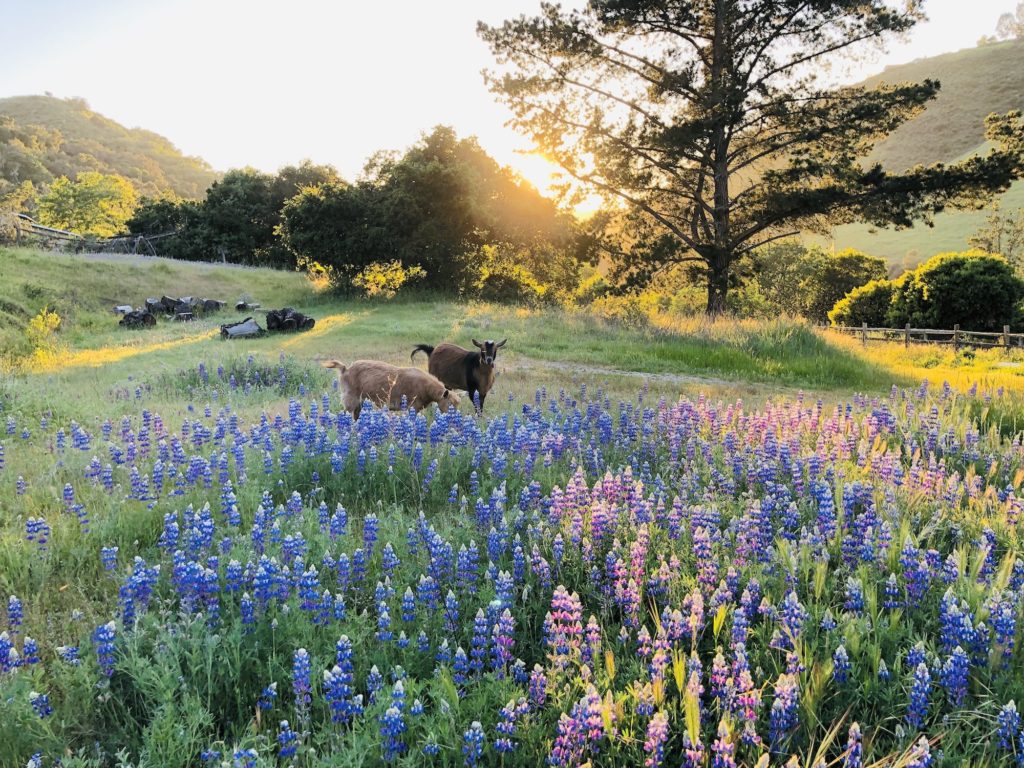
Thank you for visiting my blog. Wishing you peace, love, happiness, and beautiful vistas!